Home Blog Presentation Ideas About Me Slides: How to Introduce Yourself in a Presentation

About Me Slides: How to Introduce Yourself in a Presentation

From conference talks to client demos, it’s always essential to include an About Me slide in any presentation you are giving. Introducing yourself early into the presentation helps build a better rapport with the audience.
You can start with several fun facts about me slide to break the ice or go for a more formal professional bio to explain your background and what makes you qualified to talk about the topic at hand. At any rate, your goal is to get the audience on your side by revealing some of your personality.
How to Introduce Yourself in a Presentation: 4 Approaches
It’s a good practice to include self-introduction slides at the beginning of your presentation. If you are looking to answer how to introduce yourself professionally, typically somewhere after the title, opening slide , and the main agenda. However, the presentation structure will be somewhat different depending on whether you are presenting to a new audience or a group of people familiar with (e.g., your team, clients, or business partners).
Here are four about me slide ideas you can try out, plus an About me template you can use to present yourself in a presentation.

1. Mention Your Name and Affiliations
Start with the introduction basics. State your name, company, title/position, and several quick facts about who you are and what you do. Even if you present to a familiar audience, a brief recap is always welcome.
To keep things a bit more engaging, consider adding some lesser-known facts about yourself. For example:
- Your interests
- Recent accomplishments
- Testimonial/quote from a team member
- Fun nicknames you got
The above can be nice ice breakers for less formal team presentations, project updates, or catch-ups with clients.
Here are several unique About Me examples you can try out:
For a client case study presentation :
“Hi, I’m Lynda, Chief Customer Success Specialist with Acme Corp. (Also, someone you thought was a chatbot for the first few encounters)
47 NPS | 15% Churn Rate | 40% repeat purchase rate”
For a team after-action review presentation :
Mike, Project Manager at Cool Project
(aka Maximizer)
Personal Project stats:
387 Slack messages answered
56 cups of coffee consumed
Project profit gross margin: $1.2 million
2. Work On Your Elevator Pitch
One of the best ways to introduce yourself in a presentation is to share a punchy elevator pitch. This works extra well if you are presenting to a new audience.
An elevator pitch is a concise statement (1-2 sentences) that summarizes your unique strengths, skills, and abilities and explains how these can benefit your listener.
It’s nice to have one ready for your presentations and networking in general since it helps you immediately connect with new people and communicate your value.
Writing a solid elevator pitch may require several attempts and iterations. But the sooner you start — the faster you’ll arrive at the best formula!
To get your creative juices flowing, here are several elevator pitch ideas you can incorporate in an introduction slide about yourself.
For professionals:
“Certified Salesforce Administrator, data visualization specialist, and analytics for top SaaS brands. I help businesses make more sense of their data to drive better outcomes”.
For a mentor :
“Adjunct professor of creative writing at Columbia University, published author, former lifestyle editor at Esquire, the New York Times. I can teach you how to find, shape, pitch, and publish stories for web & print.”
For a student:
“Third-year Marine Biology student at Denver State Uni. Volunteer at Lake Life Protection NGO, climate change activist, looking to expand my research about water conservation”.
3. Answer Popular Questions or Assumptions
If you are a frequent presenter , chances are you get asked a lot of the same “About Me questions” after your speeches and during the networking bits. So why not address a roaster of these in your About Me slide? Select 4-5 most common questions and list them as quick FAQs on your slide deck.
4. Focus on Telling a Story
Strong introductions are personable. They are meant to offer a sneak-peak into your personality and the passion behind your work. That’s why for less formal presentations, you can (and should!) start with a short personal story.
Remember: reliability is important to “click” with your audience.
For instance, neuroscience research of political ads recently found that ads featuring real people performed better than those with genetic stock footage. Among viewers, emotional engagement and memory encoding (recall) increased dramatically when political ads showed relatable people.
The same holds true for commerce. In 2015, GE launched a viral “What’s the Matter With Owen?” video ad series to attract more young talent to the company. The clips featured a relatable protagonist, struggling to explain what his work at GE entails e.g. that the company isn’t building railroads, but actually does some very innovative pilots. Many engineers related to the promo and work applications to GE shoot up by 800% !
As the above examples show, a good relatable story can go a long way. So think about how you can make a PowerPoint presentation about yourself more representative of who you really are as a person.
How to Give a Presentation About Yourself: 4 Fool-Proof Tips
On other occasions, you may be asked to give a full-length “about me” presentation. Typically, this is the case during a second interview, onboarding , or if you are in attending a training program or workshop where everyone needs to present themselves and their work.
Obviously, you’ll need more than one good about me slide in this case. So here’s how to prepare a superb presentation about me.
What to Put in a Presentation About Yourself?
The audience will expect to learn a mix of personal and professional facts about you. Thus, it’s a good idea to include the following information:
- Your name, contact info, website , social media handles, digital portfolio .
- Short bio or some interesting snippets.
- Career timeline (if applicable).
- Main achievements (preferably quantifiable).
- Education, special training.
- Digital badging awards , accolades, and other types of recognition.
- Something more personal — an interest, hobby, aspiration.
The above mix of items will change a bit, depending on whether you are giving an interview presentation about yourself or introduce yourself post-hiring. For example, in some cases a dedicated bio slide may be useful, but other times focusing on main achievements and goals can be better.
That being said, let’s take a closer look at how to organize the above information in a memorable presentation.
P.S. Grab an about me slide template to make the design process easier!

1. Create a List of “Facts About Me”
The easiest way to answer the “tell me about yourself” question is by having an array of facts you can easily fetch from your brain.
When it comes to a full-length about me presentation , it’s best to have a longer list ready. To keep your brainstorming process productive, organize all your ideas in the following buckets:
- Key skills (soft and hard)
- Educational accolades, training
- Accomplishments and other “bragging rights”
- Personal tidbits (a.k.a. fun facts )
Once you have a list, it gets easier to build a series of slides around it.
2. Think Like Your Audience
Most likely you’d be asked to make a presentation about yourself by a recruiter. There’s a good reason why many ask this — they want to determine if you are a good “cultural fit” for their organization.
After all, 33% of people quit within the first 3 months of accepting a new job. Among these:
- 43% of employees quit because their day-to-day role was different than what they were told it would be during the hiring process.
- 32% cite company culture as a factor for leaving within the first three months.
About me presentations often serve as an extra “filter” helping both parties ensure that they are on the same page expectations- and work style-wise. Thus, when you prepare your slide deck, do some background company research. Then try to align the presentation with it by matching the company tone, communication style, and cultural values.
3. Include Testimonials and Recommendations
Use the voice of others to back up the claims you are making in your presentation. After all, trumping your own horn is what you are expected to do in such a presentation. But the voices of others can strengthen the claims you are personally making.
Depending on your role and industry, try to sprinkle some of the following testimonials:
- LinkedIn recommendations
- Quotes from personal or professional references
- Social media comments
- Data metrics of your performance
- Funny assessments from your colleagues/friends
The above not just strengthen your narrative, but also help the audience learn some extras about you and your background. Testimonial slides can be of help for this purpose.
4. Include a Case Study
One of the best ways to illustrate who you are is to show what you are best in. Remember, an about me presentation often needs to “soft sell” your qualifications, experience, and personality.
One of the best ways to do that is to showcase how you can feel in a specific need and solve issues the business is facing.
So if you have the timeframe, use some of the ending slides to deliver a quick case study. You can present:
- Short retrospective of a past successful project
- Before-after transformations you’ve achieved
- Spotlight of the main accomplishments within the previous role
- Main customer results obtained
- Specific solution delivered by you (or the team you’ve worked with)
Ending your presentation on such a high note will leave the audience positively impressed and wondering what results you could achieve for them.
To Conclude
It’s easy to feel stumped when you are asked to talk about yourself. Because there are so many things you could mention (but not necessarily should). At the same time, you don’t want to make your introduction sound like a bragging context. So always think from the position of your audience. Do the facts you choose to share benefit them in any way? If yes, place them confidently on your About Me slides!
1. Personal Self Introduction PowerPoint Template

Use This Template
2. Self Introduction PowerPoint Template

3. Meet the Team PowerPoint Template Slides

4. Introduce Company Profile PowerPoint Template

5. Modern 1-Page Resume Template for PowerPoint

6. Modern Resume Presentation Template

Like this article? Please share
Introduce Yourself, Introduction, Presentation Ideas Filed under Presentation Ideas
Related Articles

Filed under Design • April 23rd, 2024
How to Create the Perfect Handouts for a Presentation
Learn how to create effective handouts for presentations and the recommended structure for handouts with this guide.

Filed under Presentation Ideas • February 15th, 2024
How to Create a 5 Minutes Presentation
Master the art of short-format speeches like the 5 minutes presentation with this article. Insights on content structure, audience engagement and more.

Filed under PowerPoint Tutorials • February 7th, 2024
How to Make a Venn Diagram in PowerPoint
Discover how easy is to make a Venn Diagram in PowerPoint with three different methods: SmartArt, PowerPoint shapes, and Venn Diagram PowerPoint Templates.
Leave a Reply

How it works
Transform your enterprise with the scalable mindsets, skills, & behavior change that drive performance.
Explore how BetterUp connects to your core business systems.
We pair AI with the latest in human-centered coaching to drive powerful, lasting learning and behavior change.
Build leaders that accelerate team performance and engagement.
Unlock performance potential at scale with AI-powered curated growth journeys.
Build resilience, well-being and agility to drive performance across your entire enterprise.
Transform your business, starting with your sales leaders.
Unlock business impact from the top with executive coaching.
Foster a culture of inclusion and belonging.
Accelerate the performance and potential of your agencies and employees.
See how innovative organizations use BetterUp to build a thriving workforce.
Discover how BetterUp measurably impacts key business outcomes for organizations like yours.
A demo is the first step to transforming your business. Meet with us to develop a plan for attaining your goals.

- What is coaching?
Learn how 1:1 coaching works, who its for, and if it's right for you.
Accelerate your personal and professional growth with the expert guidance of a BetterUp Coach.
Types of Coaching
Navigate career transitions, accelerate your professional growth, and achieve your career goals with expert coaching.
Enhance your communication skills for better personal and professional relationships, with tailored coaching that focuses on your needs.
Find balance, resilience, and well-being in all areas of your life with holistic coaching designed to empower you.
Discover your perfect match : Take our 5-minute assessment and let us pair you with one of our top Coaches tailored just for you.

Research, expert insights, and resources to develop courageous leaders within your organization.
Best practices, research, and tools to fuel individual and business growth.
View on-demand BetterUp events and learn about upcoming live discussions.
The latest insights and ideas for building a high-performing workplace.
- BetterUp Briefing
The online magazine that helps you understand tomorrow's workforce trends, today.
Innovative research featured in peer-reviewed journals, press, and more.
Founded in 2022 to deepen the understanding of the intersection of well-being, purpose, and performance
We're on a mission to help everyone live with clarity, purpose, and passion.
Join us and create impactful change.
Read the buzz about BetterUp.
Meet the leadership that's passionate about empowering your workforce.

For Business
For Individuals
The self presentation theory and how to present your best self

Jump to section
What does self presentation mean?
What are self presentation goals, individual differences and self presentation.
How can you make the most of the self presentation theory at work?
We all want others to see us as confident, competent, and likeable — even if we don’t necessarily feel that way all the time. In fact, we make dozens of decisions every day — whether consciously or unconsciously — to get people to see us as we want to be seen. But is this kind of self presentation dishonest? Shouldn’t we just be ourselves?
Success requires interacting with other people. We can’t control the other side of those interactions. But we can think about how the other person might see us and make choices about what we want to convey.
Self presentation is any behavior or action made with the intention to influence or change how other people see you. Anytime we're trying to get people to think of us a certain way, it's an act of self presentation. Generally speaking, we work to present ourselves as favorably as possible. What that means can vary depending on the situation and the other person.
Although at first glance this may seem disingenuous, we all engage in self-presentation. We want to make sure that we show up in a way that not only makes us look good, but makes us feel good about ourselves.
Early research on self presentation focused on narcissism and sociopathy, and how people might use the impression others have of them to manipulate others for their benefit. However, self presentation and manipulation are distinct. After all, managing the way others see us works for their benefit as well as ours.
Imagine, for example, a friend was complaining to you about a tough time they were having at work . You may want to show up as a compassionate person. However, it also benefits your friend — they feel heard and able to express what is bothering them when you appear to be present, attentive, and considerate of their feelings. In this case, you’d be conscious of projecting a caring image, even if your mind was elsewhere, because you value the relationship and your friend’s experience.
To some extent, every aspect of our lives depends on successful self-presentation. We want our families to feel that we are worthy of attention and love. We present ourselves as studious and responsible to our teachers. We want to seem fun and interesting at a party, and confident at networking events. Even landing a job depends on you convincing the interviewer that you are the best person for the role.
There are three main reasons why people engage in self presentation:
Tangible or social benefits:
In order to achieve the results we want, it often requires that we behave a certain way. In other words, certain behaviors are desirable in certain situations. Matching our behavior to the circumstances can help us connect to others, develop a sense of belonging , and attune to the needs and feelings of others.
Example: Michelle is a new manager . At her first leadership meeting, someone makes a joke that she doesn’t quite get. When everyone else laughs, she smiles, even though she’s not sure why.
By laughing along with the joke, Michelle is trying to fit in and appear “in the know.” Perhaps more importantly, she avoids feeling (or at least appearing) left out, humorless, or revealing that she didn’t get it — which may hurt her confidence and how she interacts with the group in the future.
To facilitate social interaction:
As mentioned, certain circumstances and roles call for certain behaviors. Imagine a defense attorney. Do you think of them a certain way? Do you have expectations for what they do — or don’t — do? If you saw them frantically searching for their car keys, would you feel confident with them defending your case?
If the answer is no, then you have a good idea of why self presentation is critical to social functioning. We’re surprised when people don’t present themselves in a way that we feel is consistent with the demands of their role. Having an understanding of what is expected of you — whether at home, work, or in relationships — may help you succeed by inspiring confidence in others.
Example: Christopher has always been called a “know-it-all.” He reads frequently and across a variety of topics, but gets nervous and tends to talk over people. When attending a networking event, he is uncharacteristically quiet. Even though he would love to speak up, he’s afraid of being seen as someone who “dominates” the conversation.
Identity Construction:
It’s not enough for us to declare who we are or what we want to be — we have to take actions consistent with that identity. In many cases, we also have to get others to buy into this image of ourselves as well. Whether it’s a personality trait or a promotion, it can be said that we’re not who we think we are, but who others see.
Example: Jordan is interested in moving to a client-facing role. However, in their last performance review, their manager commented that Jordan seemed “more comfortable working independently.”
Declaring themselves a “people person” won’t make Jordan’s manager see them any differently. In order to gain their manager’s confidence, Jordan will have to show up as someone who can comfortably engage with clients and thrive in their new role.
We may also use self presentation to reinforce a desired identity for ourselves. If we want to accomplish something, make a change, or learn a new skill , making it public is a powerful strategy. There's a reason why people who share their goals are more likely to be successful. The positive pressure can help us stay accountable to our commitments in a way that would be hard to accomplish alone.
Example: Fatima wants to run a 5K. She’s signed up for a couple before, but her perfectionist tendencies lead her to skip race day because she feels she hasn’t trained enough. However, when her friend asks her to run a 5K with her, she shows up without a second thought.
In Fatima’s case, the positive pressure — along with the desire to serve a more important value (friendship) — makes showing up easy.
Because we spend so much time with other people (and our success largely depends on what they think of us), we all curate our appearance in one way or another. However, we don’t all desire to have people see us in the same way or to achieve the same goals. Our experiences and outcomes may vary based on a variety of factors.
One important factor is our level of self-monitoring when we interact with others. Some people are particularly concerned about creating a good impression, while others are uninterested. This can vary not only in individuals, but by circumstances. A person may feel very confident at work , but nervous about making a good impression on a first date.
Another factor is self-consciousness — that is, how aware people are of themselves in a given circumstance. People that score high on scales of public self-consciousness are aware of how they come across socially. This tends to make it easier for them to align their behavior with the perception that they want others to have of them.
Finally, it's not enough to simply want other people to see you differently. In order to successfully change how other people perceive you, need to have three main skills:
1. Perception and empathy
Successful self-presentation depends on being able to correctly perceive how people are feeling , what's important to them, and which traits you need to project in order to achieve your intended outcomes.
2. Motivation
If we don’t have a compelling reason to change the perception that others have of us, we are not likely to try to change our behavior. Your desire for a particular outcome, whether it's social or material, creates a sense of urgency.
3. A matching skill set
You’ve got to be able to walk the talk. Your actions will convince others more than anything you say. In other words, you have to provide evidence that you are the person you say you are. You may run into challenges if you're trying to portray yourself as skilled in an area where you actually lack experience.
How can you make the most of the self presentation theory at work?
At its heart, self presentation requires a high-level of self awareness and empathy. In order to make sure that we're showing up as our best in every circumstance — and with each person — we have to be aware of our own motivation as well as what would make the biggest difference to the person in front of us.
Here are 6 strategies to learn to make the most of the self-presentation theory in your career:
1. Get feedback from people around you
Ask a trusted friend or mentor to share what you can improve. Asking for feedback about specific experiences, like a recent project or presentation, will make their suggestions more relevant and easier to implement.
2. Study people who have been successful in your role
Look at how they interact with other people. How do you perceive them? Have they had to cultivate particular skills or ways of interacting with others that may not have come easily to them?
3. Be yourself
Look for areas where you naturally excel and stand out. If you feel comfortable, confident, and happy, you’ll have an easier time projecting that to others. It’s much harder to present yourself as confident when you’re uncomfortable.
4. Be aware that you may mess up
As you work to master new skills and ways of interacting with others, keep asking for feedback . Talk to your manager, team, or a trusted friend about how you came across. If you sense that you’ve missed the mark, address it candidly. People will understand, and you’ll learn more quickly.
Try saying, “I hope that didn’t come across as _______. I want you to know that…”
5. Work with a coach
Coaches are skilled in interpersonal communication and committed to your success. Roleplay conversations to see how they land, and practice what you’ll say and do in upcoming encounters. Over time, a coach will also begin to know you well enough to notice patterns and suggest areas for improvement.
6. The identity is in the details
Don’t forget about the other aspects of your presentation. Take a moment to visualize yourself being the way that you want to be seen. Are there certain details that would make you feel more like that person? Getting organized, refreshing your wardrobe, rewriting your resume, and even cleaning your home office can all serve as powerful affirmations of your next-level self.
Self presentation is defined as the way we try to control how others see us, but it’s just as much about how we see ourselves. It is a skill to achieve a level of comfort with who we are and feel confident to choose how we self-present. Consciously working to make sure others get to see the very best of you is a wonderful way to develop into the person you want to be.
Transform your life
Make meaningful changes and become the best version of yourself. BetterUp's professional Coaches are here to support your personal growth journey.
Allaya Cooks-Campbell
With over 15 years of content experience, Allaya Cooks Campbell has written for outlets such as ScaryMommy, HRzone, and HuffPost. She holds a B.A. in Psychology and is a certified yoga instructor as well as a certified Integrative Wellness & Life Coach. Allaya is passionate about whole-person wellness, yoga, and mental health.
Impression management: Developing your self-presentation skills
How to make a presentation interactive and exciting, 6 presentation skills and how to improve them, how to give a good presentation that captivates any audience, what is self-preservation 5 skills for achieving it, how self-knowledge builds success: self-awareness in the workplace, 8 clever hooks for presentations (with tips), self-management skills for a messy world, developing psychological flexibility, similar articles, how self-compassion strengthens resilience, what is self-efficacy definition and 7 ways to improve it, what is self-awareness and how to develop it, how to not be nervous for a presentation — 13 tips that work (really), what i didn't know before working with a coach: the power of reflection, manage your energy, not your time: how to work smarter and faster, building resilience part 6: what is self-efficacy, why learning from failure is your key to success, stay connected with betterup, get our newsletter, event invites, plus product insights and research..
3100 E 5th Street, Suite 350 Austin, TX 78702
- Platform Overview
- Integrations
- Powered by AI
- BetterUp Lead
- BetterUp Manage™
- BetterUp Care™
- Sales Performance
- Diversity & Inclusion
- Case Studies
- Why BetterUp?
- About Coaching
- Find your Coach
- Career Coaching
- Communication Coaching
- Life Coaching
- News and Press
- Leadership Team
- Become a BetterUp Coach
- BetterUp Labs
- Center for Purpose & Performance
- Leadership Training
- Business Coaching
- Contact Support
- Contact Sales
- Privacy Policy
- Acceptable Use Policy
- Trust & Security
- Cookie Preferences

- My presentations
Auth with social network:
Download presentation
We think you have liked this presentation. If you wish to download it, please recommend it to your friends in any social system. Share buttons are a little bit lower. Thank you!
Presentation is loading. Please wait.
Chapter 2 Understanding Yourself
Published by Joella Whitney Townsend Modified over 8 years ago
Similar presentations
Presentation on theme: "Chapter 2 Understanding Yourself"— Presentation transcript:
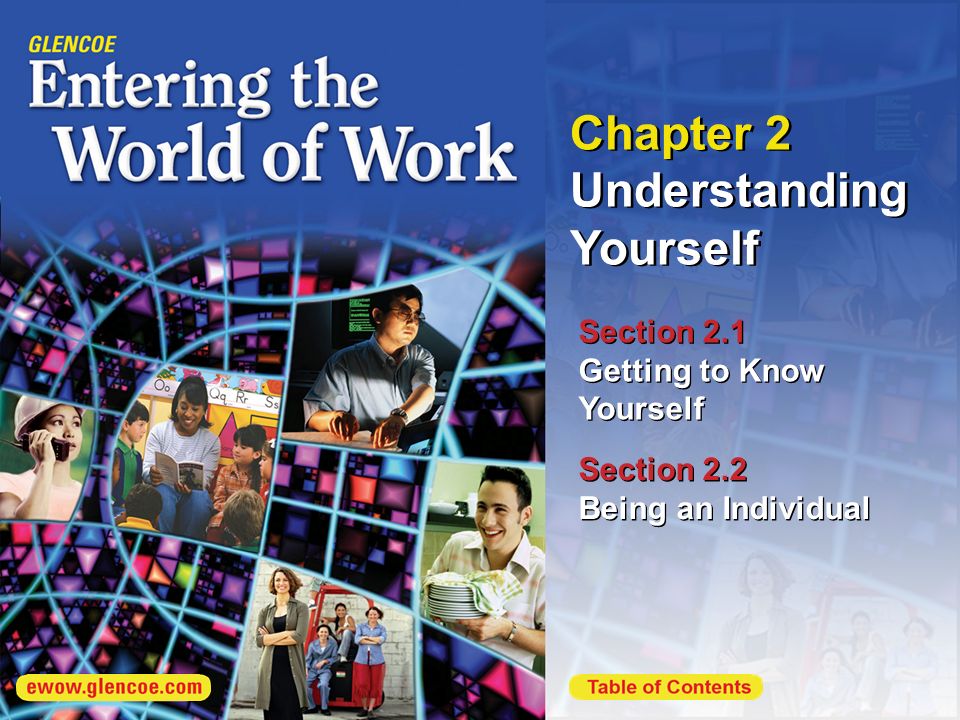
Chapter 2 Discovering Who You Are. Key Questions Did you ever want to know what makes you who you are? Did you ever wonder why you acted the way you did?

Personal Reading Procedures Reading for High School and Beyond By; Holden Stengel.

When a child enters your classroom / school at the start of the school year...

Decision Making Setting Lifestyle Goals. Name the seven steps in the decision-making process. Explain how to use the decision-making process to choose.

Looking Forward to the World of Work Text: Chapter 2.

Unit 2: Self - Awareness By Dr. David Agnew and Mr. Jim Wendell Arkansas State University.

Learning About Yourself

Contents Click the link below to go directly to the slides for that chapter. Chapter 1 ■ Your Personal Strengths Chapter 2 ■ The Roles You Play Chapter.

CHAPTER 1 The Importance of Work Chapter Objectives After studying this chapter, you will be able to distinguish the difference between a job and a.

Building Health Skills Chapter 2. Focusing on the main ideas… In this lesson you will learn how to: In this lesson you will learn how to: –Demonstrate.

Workplace Basics The skills employers want…. What we know employers expect… Standard academic skills: Basic reading and comprehension Basic math and problem.

Section 3: Exploring Careers Created by Stephanie Dupley 1.

Building Character Empathy. What is it? Empathy is the ability to both recognize and understand the feelings, thoughts, needs and behaviours of others.

EXPLORING THE WORLD OF WORK

Section 37.1 Important Career Decisions

Today’s Warm-Up! What are basic skills? Give a few examples. Why are these skills important?

Self-Awareness Chapter 2 © 2010 McGraw-Hill Higher Education. All rights reserved. McGraw-Hill.

CHAPTER 1 Self Awareness zYour Interests and Values zYour Skills and Aptitudes zYour Personality and Learning Styles.

Read to Learn How to determine your values, interests, aptitudes, and abilities The importance of good self-concept in choosing a career How to identify.

Are Your Goals Realistic?
About project
© 2024 SlidePlayer.com Inc. All rights reserved.
Got any suggestions?
We want to hear from you! Send us a message and help improve Slidesgo
Top searches
Trending searches

teacher appreciation
11 templates

17 templates

el salvador
32 templates

summer vacation
19 templates

27 templates
About Me Presentation templates
Do you want your classmates to know a bit more about you maybe you want to tell others what your favorite hobbies are these google slides themes and powerpoint templates are great for introducing yourself and sharing a bit about yourself..
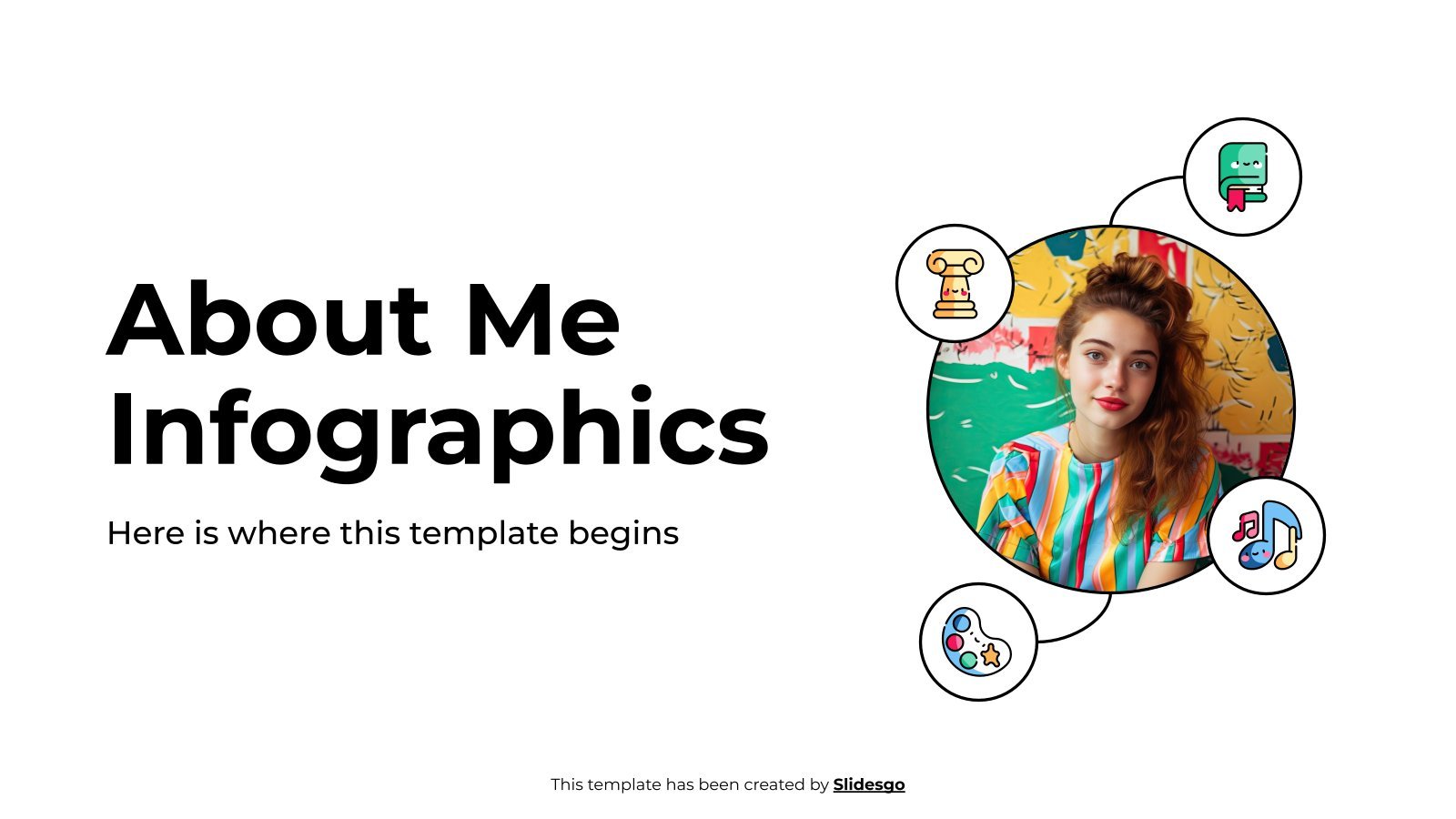
About Me Infographics
Download the "About Me Infographics" template for PowerPoint or Google Slides and discover the power of infographics. An infographic resource gives you the ability to showcase your content in a more visual way, which will make it easier for your audience to understand your topic. Slidesgo infographics like this set...
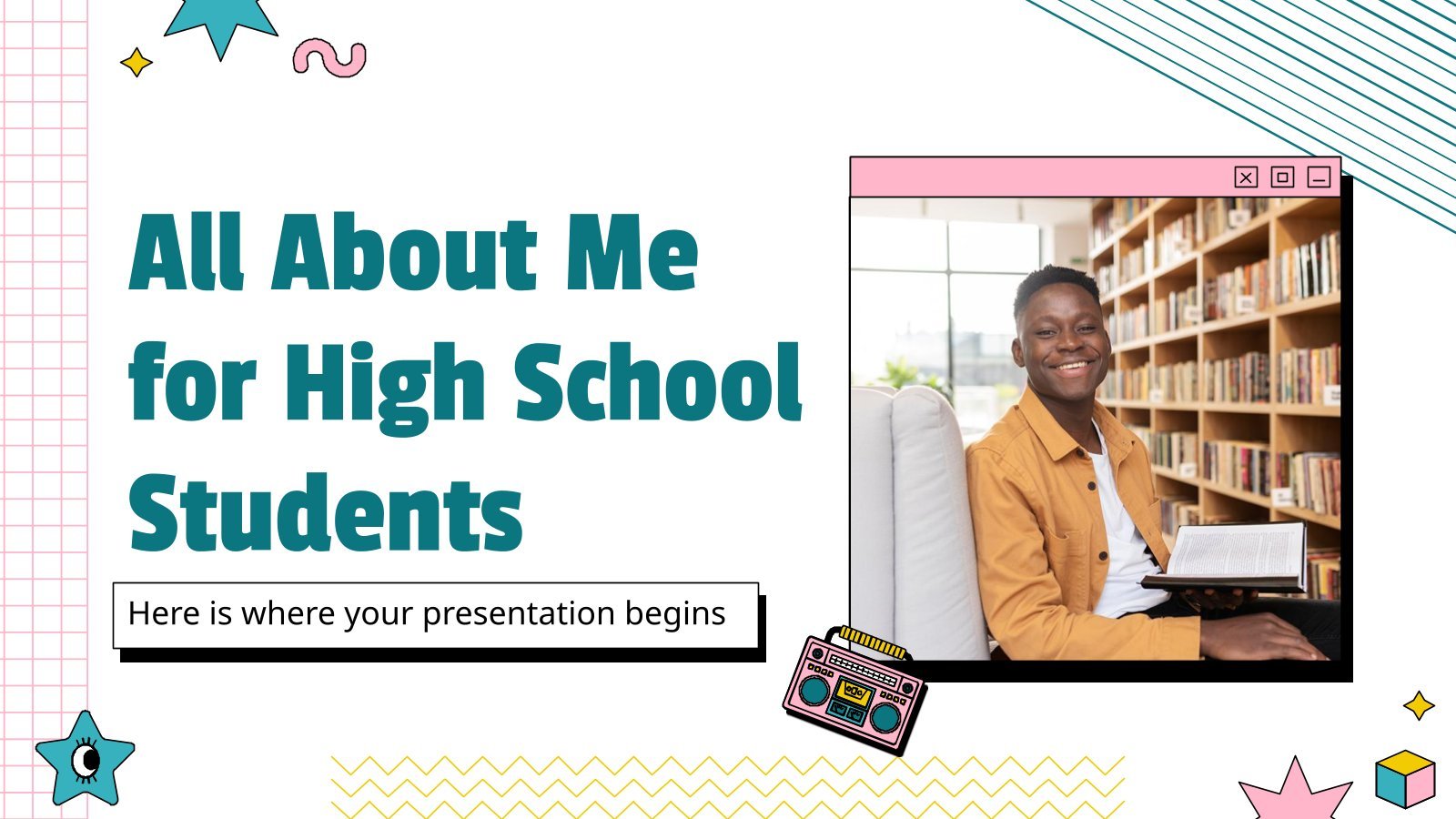
All About Me for High School Students
Download the "All About Me for High School Students" presentation for PowerPoint or Google Slides. The education sector constantly demands dynamic and effective ways to present information. This template is created with that very purpose in mind. Offering the best resources, it allows educators or students to efficiently manage their...

Premium template
Unlock this template and gain unlimited access
All About Me
Introduce yourself in a new creative way with this design for Google Slides and PowerPoint! The 31 slides of this presentation will let you speak about your hobbies, favourite foods, favourite music and hobbies… presenting yourself in a fun, open way to your students will make them see you as...

About Yourself
Download the "About Yourself" presentation for PowerPoint or Google Slides and start impressing your audience with a creative and original design. Slidesgo templates like this one here offer the possibility to convey a concept, idea or topic in a clear, concise and visual way, by using different graphic resources. You...
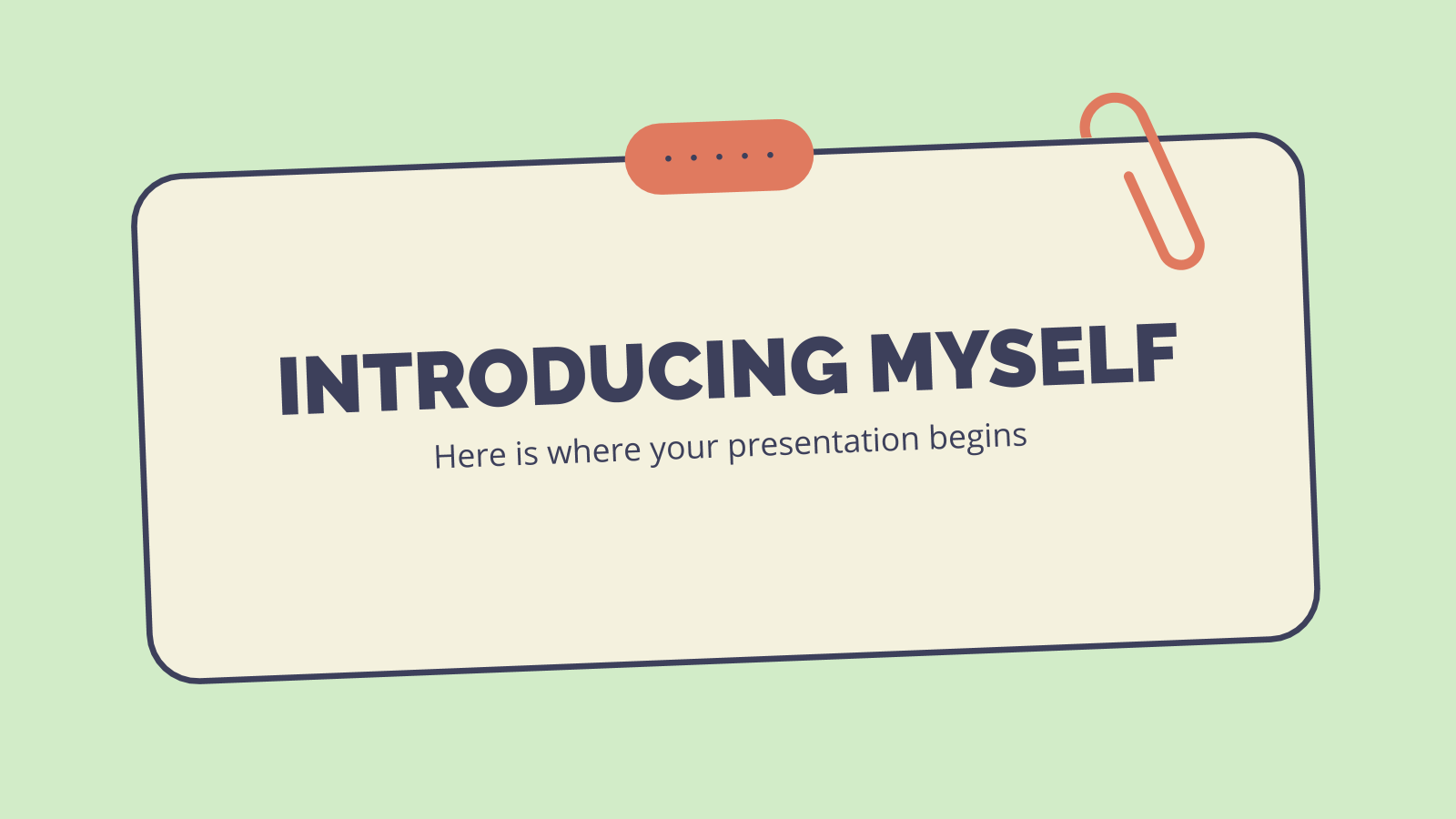
Introducing Myself
You never know when a slideshow about yourself could come in handy. Be prepared and use this template to introduce yourself to the audience. Explain your work, your strengths, your personal goals, your values, whatever you can come up with! The slides are cool and contain lots of compositions where...
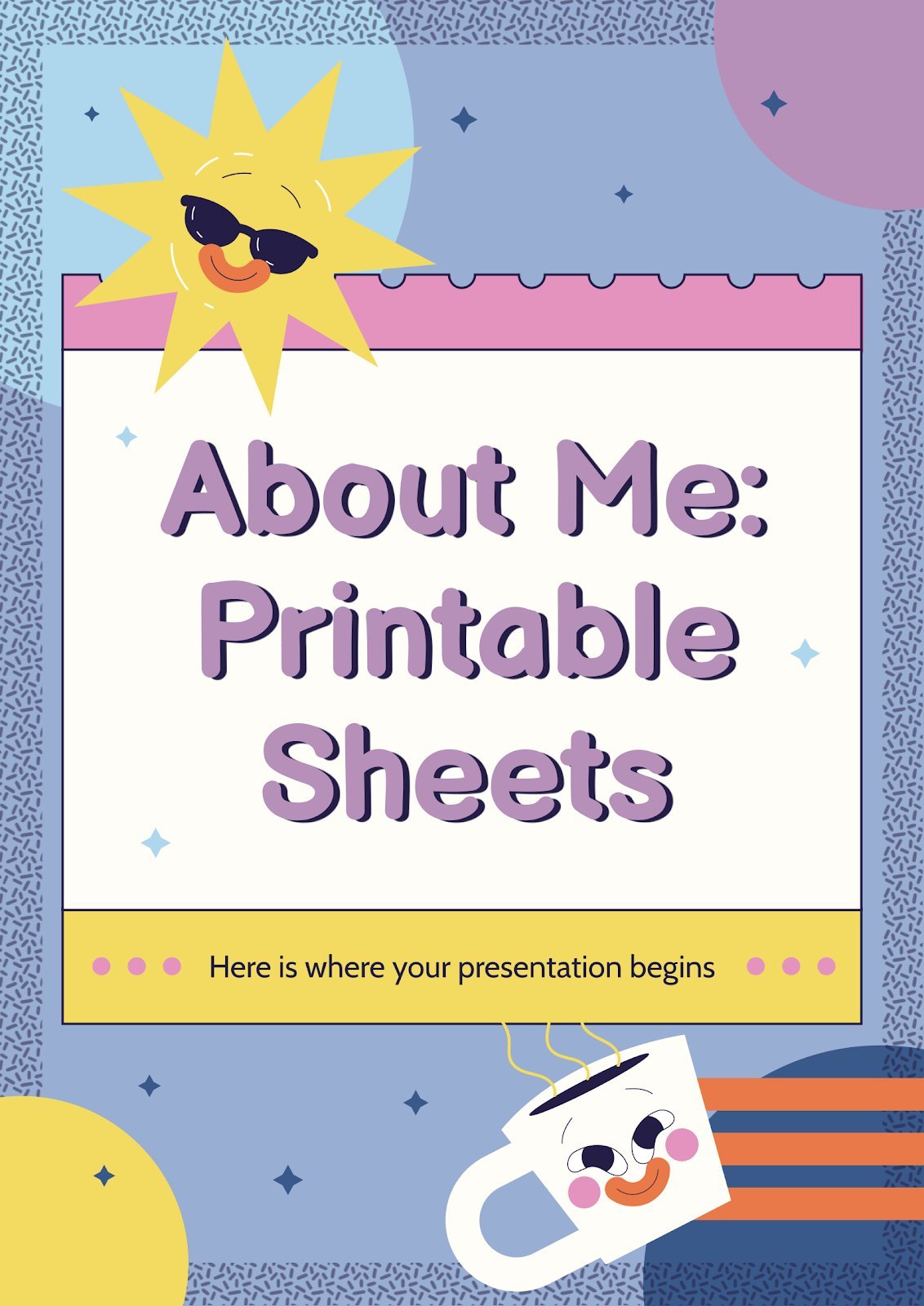
About Me: Printable Sheets
Do you want your friends or your classmates to know you better? And do it in a cool way too? Granted! We have a new template with printable sheets, which are very colorful and can be modified with your own content. What are your favorite books or movies? What do...

K-Pop Singer Portfolio
Download the "K-Pop Singer Portfolio" presentation for PowerPoint or Google Slides. When a potential client or employer flips through the pages of your portfolio, they're not just looking at your work; they're trying to get a sense of who you are as a person. That's why it's crucial to curate...
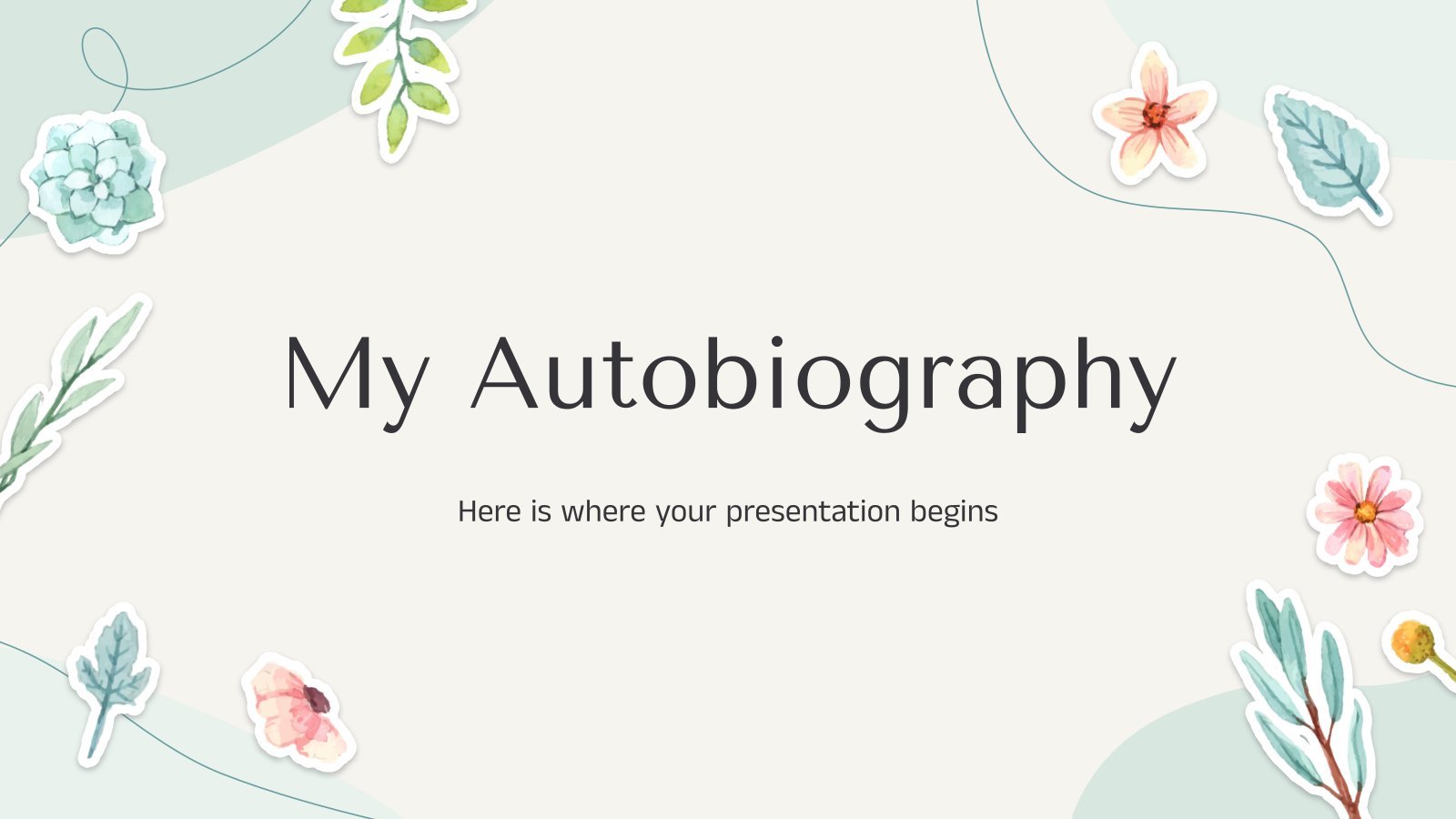
My Autobiography
Download the "My Autobiography" presentation for PowerPoint or Google Slides. The education sector constantly demands dynamic and effective ways to present information. This template is created with that very purpose in mind. Offering the best resources, it allows educators or students to efficiently manage their presentations and engage audiences. With...
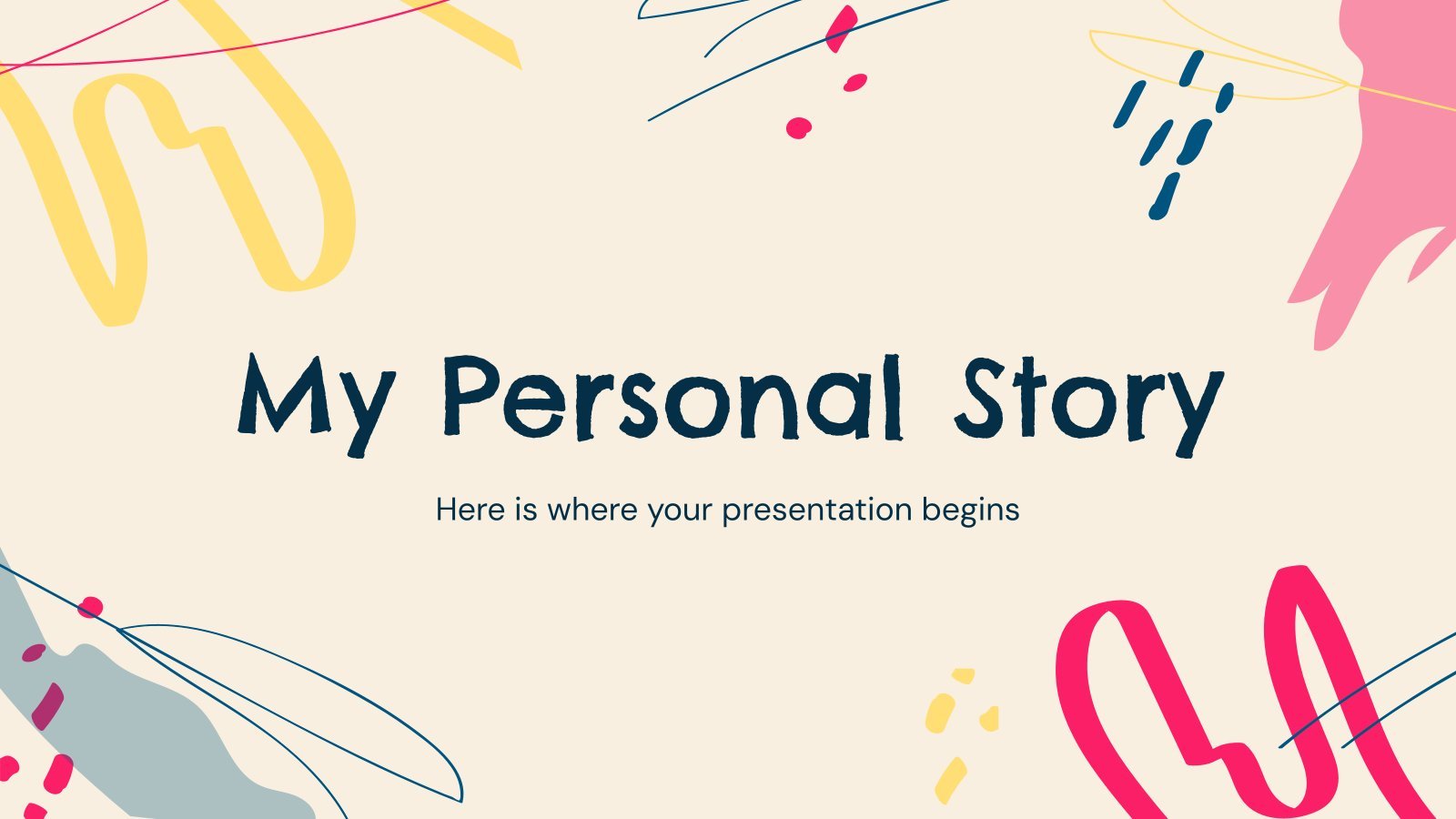
My Personal Story
Download the "My Personal Story" presentation for PowerPoint or Google Slides and start impressing your audience with a creative and original design. Slidesgo templates like this one here offer the possibility to convey a concept, idea or topic in a clear, concise and visual way, by using different graphic resources....
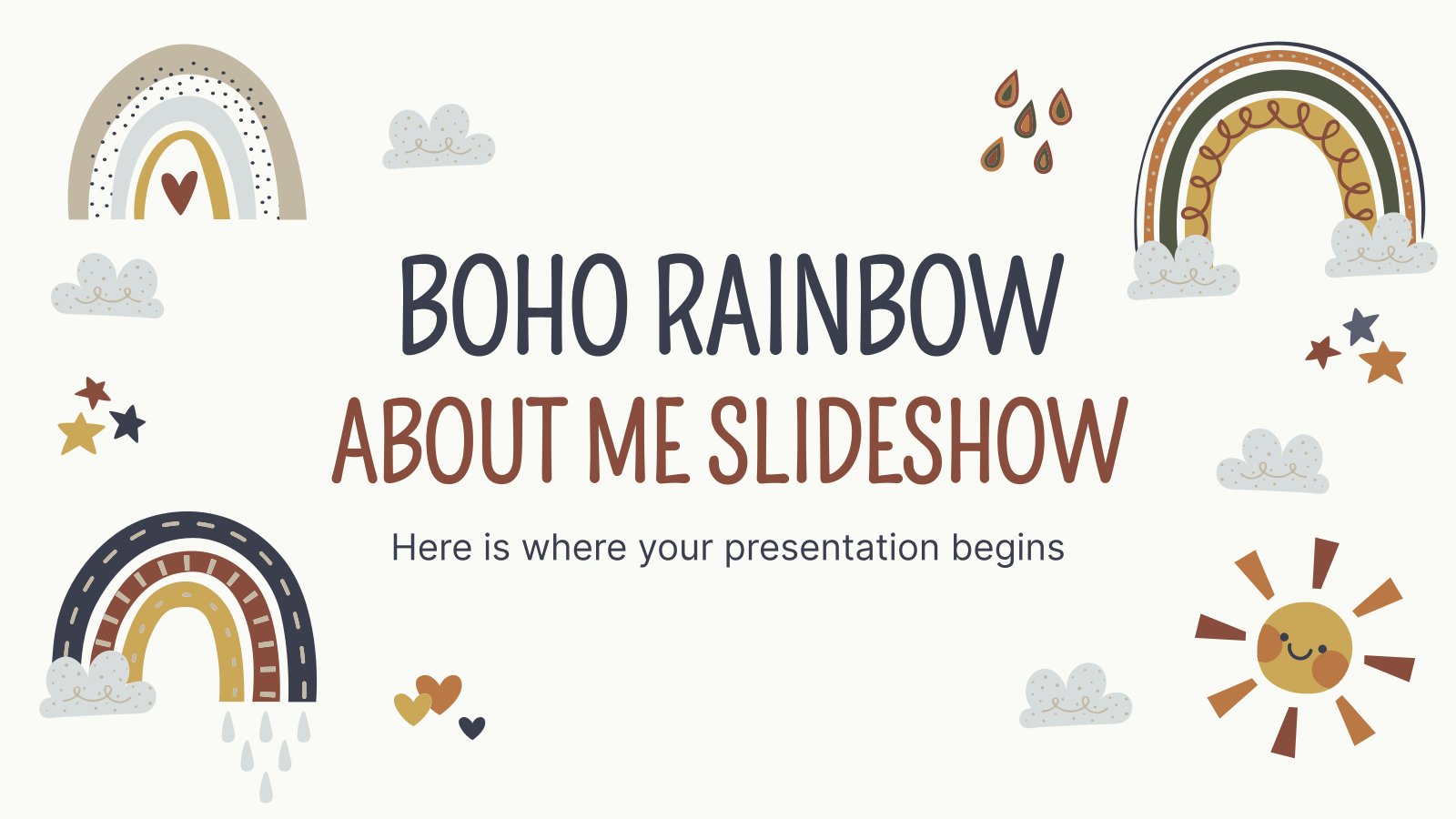
Boho Rainbow About Me Slideshow
If you find yourself caught between your love for boho style and your fascination with rainbows, we have some exciting news for you! We've got the perfect template that combines these two. Say hello to your new all-time favorite design, complete with adorable rainbow illustrations scattered throughout. Not only will...

My Favorite Playlists Lo-fi Style
It's raining in the street. You are in your room drinking freshly brewed coffee while working on your computer. You are very focused on what you are doing. You decide to put on some music so you can continue in that mood of maximum concentration. You go into your music...
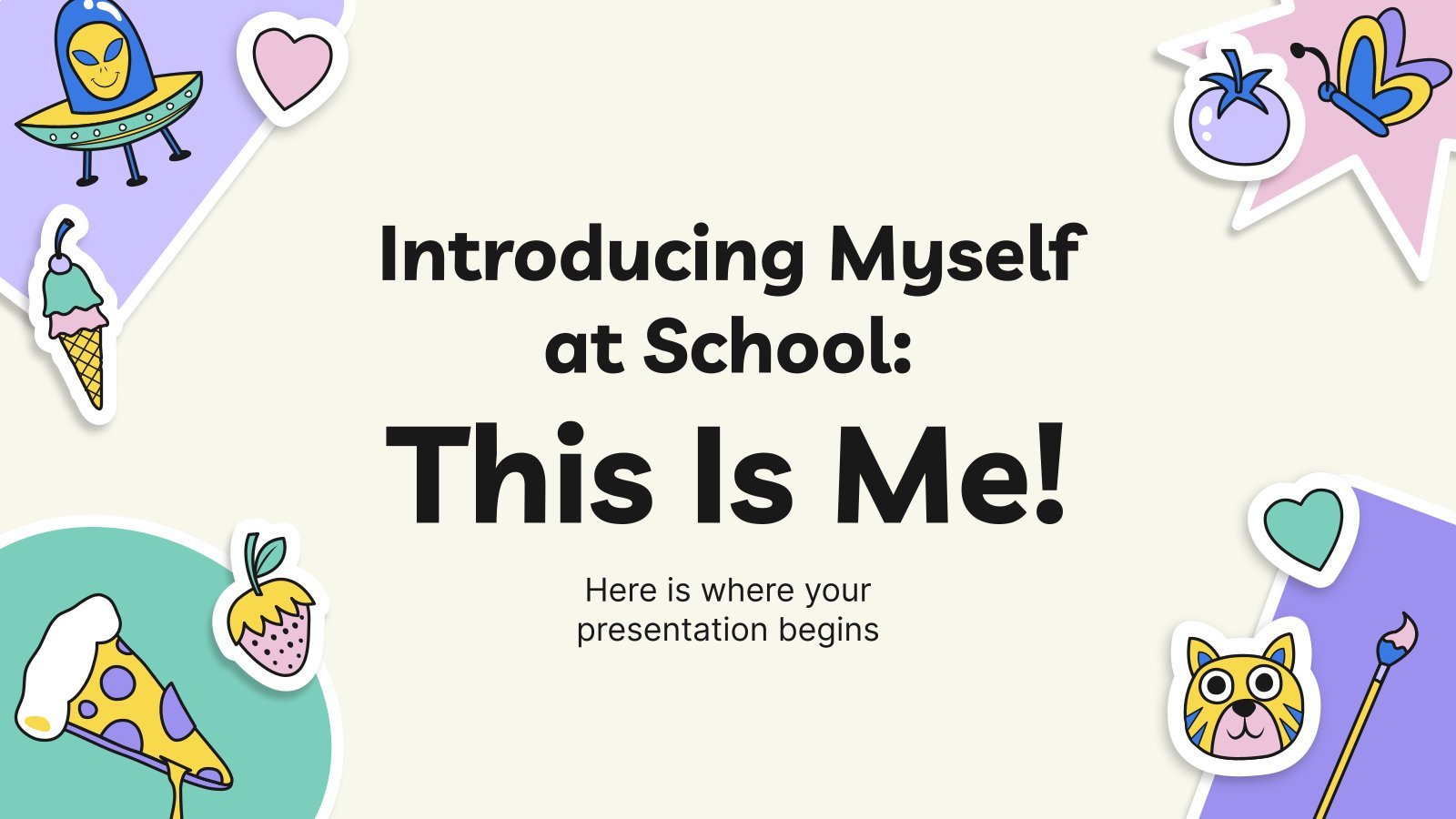
Introducing Myself at School: This is me!
This is me! A presentation template for Google Slides and PowerPoint, I'll tell you a little bit more about myself! I come from the Slidesgo website - there you can find more templates like me! My slides are very fun and creative, as they are decorated with colorful stickers of...
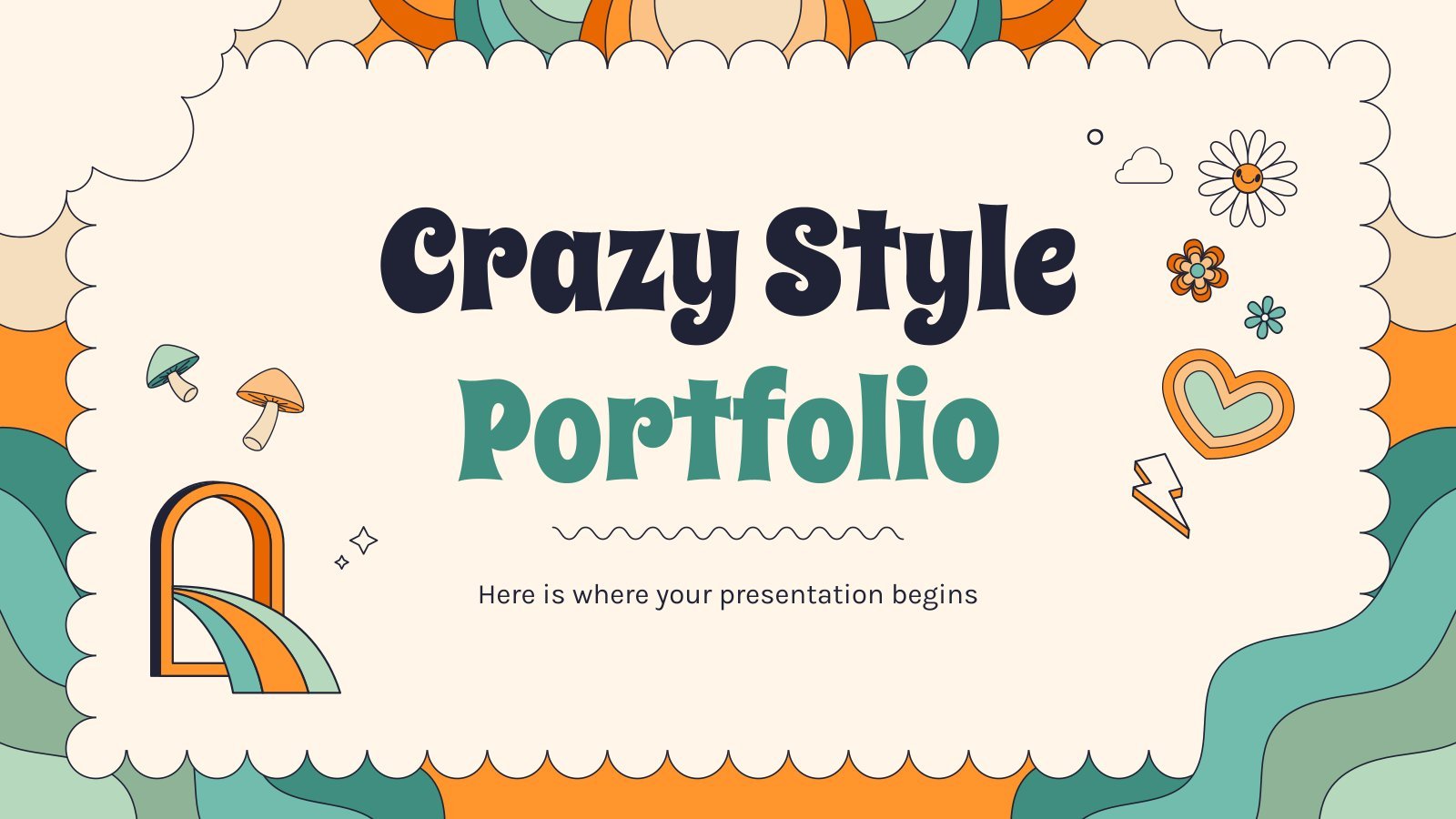
Crazy Style Portfolio
Wow, who has designed the backgrounds of these slides? Why do these flowers have faces? Have you lost your mind? Don't worry, it's just that the design of this portfolio can be described as "crazy". But still, we think there will be someone who likes it and can make good...
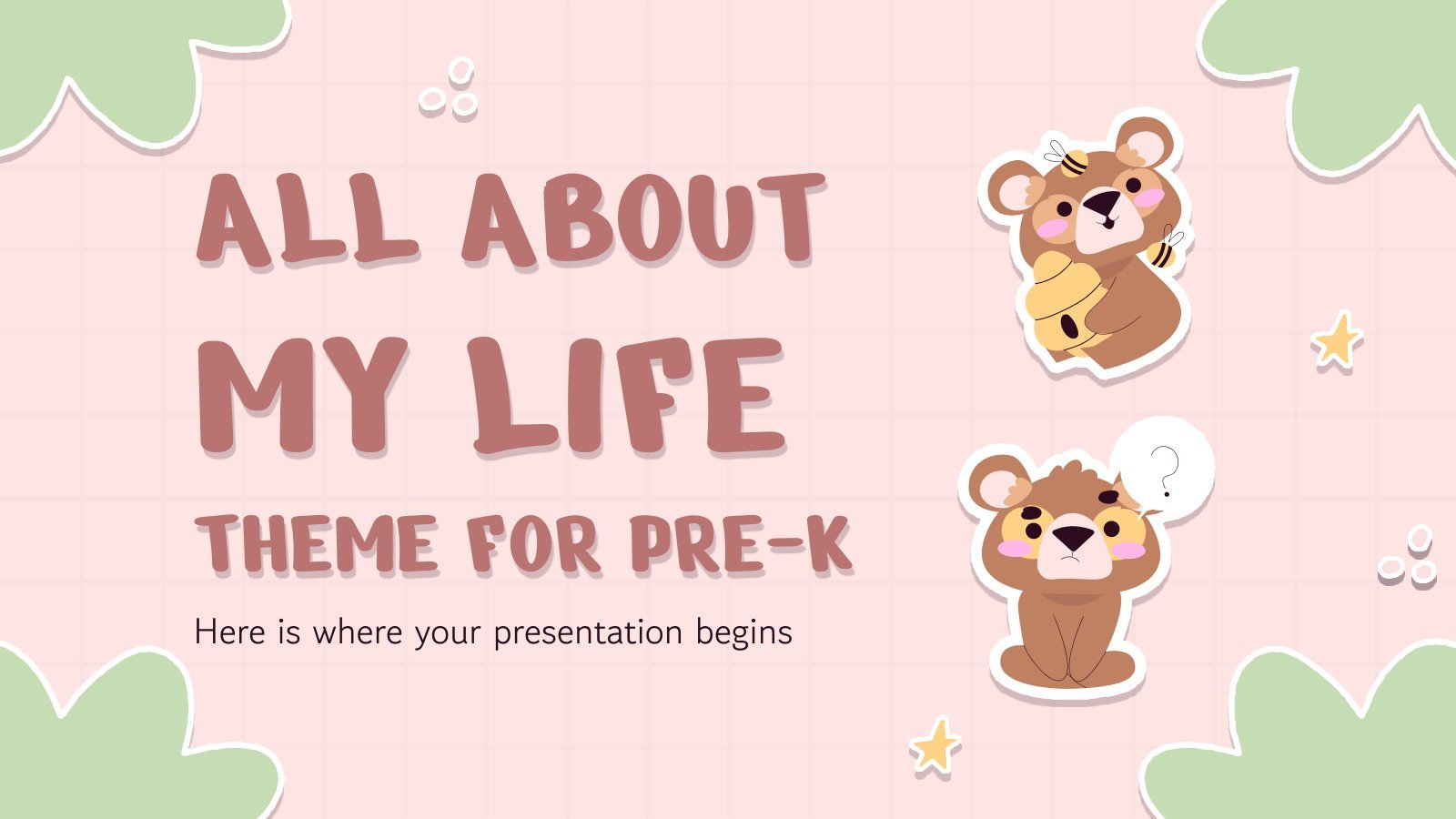
All About My life Theme for Pre-K
Help your little students present themselves with this set of creative resources! It’s full of cute illustrations, pastel tones, waves and fun ways of helping children getting to know each other. Did you know that building relationships at this stage of life is one of the key components of children’s...
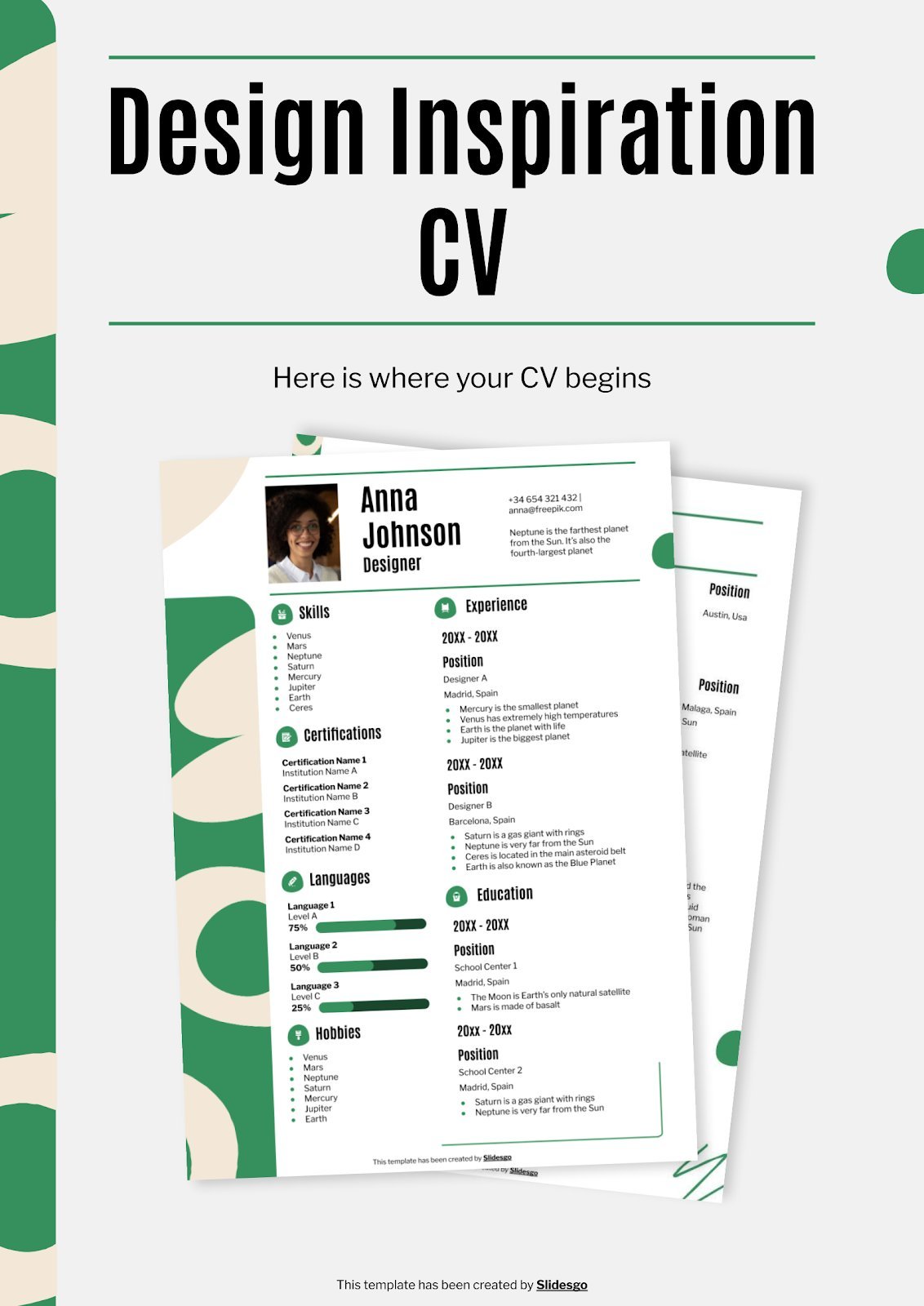
Design Inspiration CV
Download the "Design Inspiration CV" presentation for PowerPoint or Google Slides. Having a good CV can make all the difference in landing your dream job. It's not just a piece of paper, it's your chance to showcase your skills, experience, and personality. If you want to stand out from the...
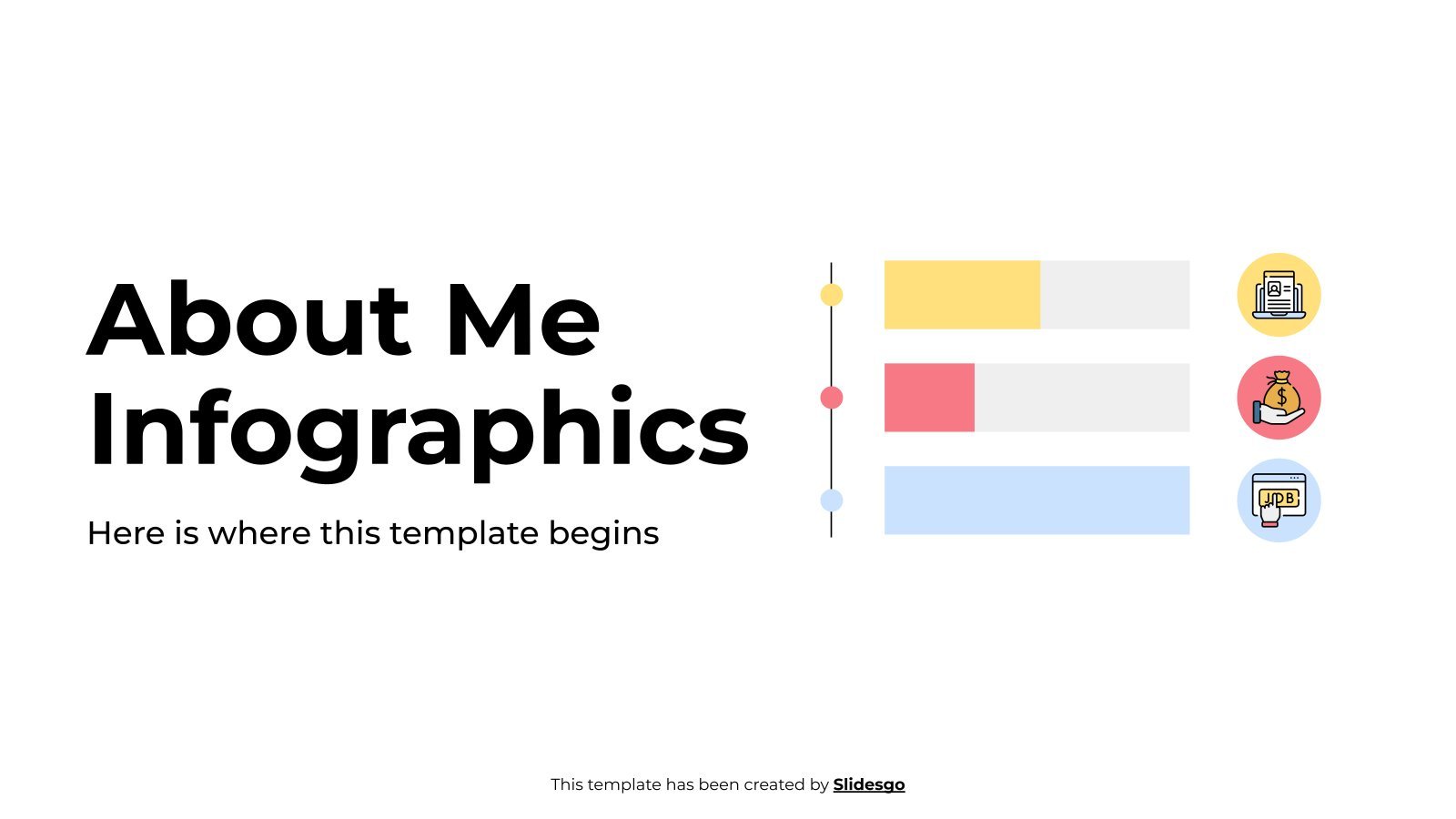
My Life Minitheme
Quoting a famous rock band, "it's my life!". You have your own way of living, with your own values and philosophy. You might have hobbies that not many people have, or you might have worked in many different places. You might even have been born on a plane mid-flight! Time...
- Page 1 of 8
New! Make quick presentations with AI
Slidesgo AI presentation maker puts the power of design and creativity in your hands, so you can effortlessly craft stunning slideshows in minutes.

Register for free and start editing online
ATLANTA, MAY 23-24 PUBLIC SPEAKING CLASS IS ALMOST FULL! RESERVE YOUR SPOT NOW

- Public Speaking Classes
- Corporate Presentation Training
- Online Public Speaking Course
- Northeast Region
- Midwest Region
- Southeast Region
- Central Region
- Western Region
- Presentation Skills
- 101 Public Speaking Tips
- Fear of Public Speaking
How to Introduce Yourself in a Presentation [with Examples]

In this post, we are going to cover the best way, a very simple three-step process that will help you introduce yourself in a presentation. A summary of the steps is below.
- Start with your name and company (or organization or school).
- Tell your audience what problem you can solve for them.
- Share some type of proof (social proof works best) that you can solve this problem.
I will break down each step into a simple-to-follow process. But first… a little background.
First, Identify What Your Audience Wants from Your Presentation

So, before you design your introduction, think about what your audience wants from your presentation. Why do they want to spend their valuable time listening to you? Are going to waste their time? Or, are you going to provide them with something valuable?
For instance, I have expertise in a number of different areas. I’m a public speaking coach, a keynote speaker, a best-selling author, a search engine optimization specialist, and a popular podcaster. However, if I delivered that sentence to any audience, the most likely reaction would be, “So what?” That sentence doesn’t answer any of the above questions. The statement is also really “me-focused” not “audience-focused.”
So, when I start to design my self-introduction, I want to focus just on the area of expertise related to my topic. I’m then going to answer the questions above about that particular topic. Once you have these answers, set them aside for a second. They will be important later.
How to Introduce Yourself in a Presentation in Class.

Instead, you probably want to add in a fun way to start a speech . For example, instead of introducing yourself in your class speech and starting in an awkward way, start with a startling statistic. Or start with a summary of your conclusion. Or, you could start the presentation with an inspirational quote.
Each of these presentation starters will help you lower your nervousness and decrease your awkwardness.
If you are delivering a speech in a speech competition or to an audience who doesn’t know you try this technique. Just introduce yourself by saying your name , the school you represent , and your topic . Make it easy. This way you get to your content more quickly and lower your nervousness.
Typically, after you get the first few sentences out of the way, your nervousness will drop dramatically. Since your name, school, and topic should be very easy to remember, this takes the pressure off you during the most nervous moments.
Obviously, follow the guidelines that your teacher or coach gives you. (The competition may have specific ways they want you to introduce yourself.)
How to Introduce Yourself in a Business Presentation — A Step-by-Step Guide.

In a professional setting, when new people walk into a meeting and don’t know what to expect, they will feel uncomfortable. The easiest way to ease some of that tension is to chat with your audience as they come into the room.
By the way, if you are looking for a template for an Elevator Speech , make sure to click this link.
Step #1: Start with your name and company name (or organization).
This one is easy. Just tell your audience your name and the organization that you are representing. If your organization is not a well-known brand name, you might add a short clarifying description. For instance, most people outside of the training industry have never heard of The Leader’s Institute ®. So, my step #1 might sound something like…
Hi, I’m Doug Staneart with The Leader’s Institute ®, an international leadership development company…
Still short and sweet, but a little more clear to someone who has never heard of my company.
Should you give your job title? Well… Maybe and sometimes. Add your title into the introduction only if your title adds to your credibility.
For example, if you are delivering a financial presentation and you are the Chief Financial Officer (CFO) of your company, you might mention that. Your title adds to your credibility. However, if the CFO is delivering a presentation about the value of joining a trade association, the CFO title adds little credibility. So, there is very little value in adding the title.
Step #2: Tell your audience what problem you can solve for them.

For instance, if my topic is how to deliver presentations, I have to determine why the audience would care. What problem will they have that I can help them with? For my audiences, the problem that I most often help people with is how to eliminate public speaking fear. Once I have the problem, I add that to my introduction by using the words, “I help people…”
Hi, I’m Doug Staneart with The Leader’s Institute ®, an international leadership development company, and I help people eliminate public speaking fear.
However, if my topic is How to Close a Higher Percentage of Sales Presentations , I’d likely want to alter my introduction a little. I might say something like…
Hi, I’m Doug Staneart with The Leader’s Institute ®, an international leadership development company, and I help people design more persuasive sales presentations.
I have expertise in both areas. However, I focus my introduction on just the expertise that is applicable to this audience. If I gave the first introduction to the second audience, they will likely respond by thinking, well, I don’t really get nervous speaking, so I guess I can tune out of this speech .
So, create a problem statement starting with, “I help people…” Make the statement apply to what your audience really wants.
Step #3: Share some type of proof (social proof works best) that you can solve this problem.
By the way, if you just do steps #1 and #2, your introduction will be better than most that you will hear. However, if you add Step #3, you will gain more respect (and attention) from your audience. Without adding some type of proof that you can solve this problem, you are just giving your opinion that you are an expert. However, if you can prove it, you are also proving that you are an expert.
This is the tricky part. For some reason, most people who get to this part feel like they haven’t accomplished great things, so they diminish the great accomplishments that they do have.
For instance, an easy way to offer proof is with a personal story of how you have solved that problem in the past.
A Few Examples of How to Introduce Yourself Before a Presentation.
For instance, one of my early clients was a young accountant. When I was working with him, he came up with the following introduction, “I’m Gary Gorman with Gorman and Associates CPA’s, and I help small businesses avoid IRS audits.” It was a great, audience-focused attention-getter. (No one wants to get audited.) However, as an accountant, it wasn’t like his company was getting a lot of five-star reviews on Yelp! So, he was kind of struggling with his social proof. So, I asked him a series of questions.
Me, “How many clients do you have?”
Gary, “Over 300.”
Me, “How many small business tax returns have you processed?”
Gary, “Well, at least a couple hundred a year for 15 years.”
Me, “So, at least 3000?” He nodded. “How many of your 300 clients have been audited since you have been representing them?”
He looked at me and said, “Well, none.”
So, we just added that piece of proof to his talk of introduction.
I’m Gary Gorman with Gorman and Associates CPA’s, and I help small businesses avoid IRS audits. In fact, in my career, I’ve helped clients complete over 3000 tax returns, and not a single one has ever been audited.
Here Is How I Adjust My Introduction Based on What I Want the Audience to Do.
For my proof, I have a number of options. Just like Gary, I have had a lot of clients who have had great successes. In addition, I have published two best-selling books about public speaking. I also have hundreds of thousands of people who listen to my podcast each week. So, I can pick my evidence based on what I want my audience to do.
For instance, if I’m speaking at a convention, and I want the audience to come by my booth to purchase my books, my introduction might sound like this.
Hi, I’m Doug Staneart with The Leader’s Institute ®, an international leadership development company, and I help people eliminate public speaking fear. One of the things that I’m most know for is being the author of two best-selling books, Fearless Presentations and Mastering Presentations.
However, if I’m leading a webinar, I may want the audience to purchase a seat in one of my classes. In that case, my introduction might sound like this.
Hi, I’m Doug Staneart with The Leader’s Institute ®, an international leadership development company, and I help people eliminate public speaking fear. For instance, for the last 20 years, I’ve taught public speaking classes to over 20,000 people, and I haven’t had a single person fail to reduce their nervousness significantly in just two days.
If my goal is to get the audience to subscribe to my podcast, my intro might sound like…
Hi, I’m Doug Staneart with The Leader’s Institute ®, an international leadership development company, and I help people eliminate public speaking fear. One of the ways that I do this is with my weekly podcast called, Fearless Presentations, which has over one million downloads, so far.
Use the Form Below to Organize How to Introduce Yourself in a Presentation.
The point is that you want to design your introduction in a way that makes people pause and think, “Really? That sounds pretty good.” You want to avoid introductions that make your audience think, “So what?”
If you have a speech coming up and need a good introduction, complete the form below. We will send you your answers via email!
Can You Replace Your Introduction with a PowerPoint Slide?
Is it okay to make your first slide (or second slide) in your presentation slides an introduction? Sure. A good public speaker will often add an introduction slide with a biography, portrait, and maybe even contact information. I sometimes do this myself.
However, I NEVER read the slide to my audience. I often just have it showing while I deliver the short introduction using the guide above. This is a great way to share more of your work experience without sounding like you are bragging.
For tips about how many powerpoint slides to use in a presentation , click here.
Remember that There Is a Big Difference Between Your Introduction in a Presentation and Your Presentation Starter.
When you introduce yourself in a presentation, you will often just use a single sentence to tell the audience who you are. You only use this intro if the audience doesn’t know who you are. Your presentation starter, though, is quite different. Your presentation starter should be a brief introduction with relevant details about what you will cover in your presentation.
For details, see Great Ways to Start a Presentation . In that post, we show ways to get the attention of the audience. We also give examples of how to use an interesting hook, personal stories, and how to use humor to start a presentation.

Podcasts , presentation skills
View More Posts By Category: Free Public Speaking Tips | leadership tips | Online Courses | Past Fearless Presentations ® Classes | Podcasts | presentation skills | Uncategorized
17 Self-Awareness Activities and Exercises (+Test)

In terms of psychology, self-awareness is often defined as the ability to engage in some kind of reflective awareness.
As you develop an awareness of the self, you begin to connect with your own unique identity. As you focus on yourself and start evaluating your current behavior, in comparison to your internal standards and values, you become self-conscious, and you become an objective evaluator of yourself.
There are many exercises and activities you can do to develop this self-awareness, from questions you can ask yourself to simple exercises.
In this article, we will take a look at some of those self-awareness tools.
Before you continue, we thought you might like to download our three Self-Compassion Exercises for free . These detailed, science-based exercises will not only help you increase the compassion and kindness you show yourself but will also give you the tools to help your clients, students, or employees show more compassion to themselves.
This Article Contains:
What are self-awareness activities and exercises, common self-awareness techniques, 23 self-awareness questions to ask, 2 self-awareness activities for adults, 2 self-awareness training activities for youth and students, 3 self-awareness activities and exercises for kids and toddlers, 4 employee activities for the workplace, 2 self-awareness worksheets (incl. pdf), can we measure and test self-awareness, 2 useful tests, a take-home message.
Self-awareness activities and exercises are tools that can help you to not only reach your goals but also to discover who you are at core level and what you want out of life.
The more you ‘peel the onion’ per se, the more you will discover what lies underneath. Self-awareness and self-improvement go hand in hand.
Becoming more self-aware can help you understand your wants, needs, and desires as well as your strengths and weaknesses.
Self-awareness is also an important tool for success. Those internal mental processes guide how you behave and how you act. When you become more self-aware, you begin uncovering those destructive thought patterns and unhealthy habits.

- Mindfulness Meditation.
- Grounding techniques, and reconnecting to the Earth.
- Tai Chi, Qigong, or Yoga.
- Strength Assessments , such as the Values in Action Strength Test, from the University of Pennsylvania.
- Journaling.
- Having a Personal Vision.
- Observing others.

Download 3 Free Self-Compassion Exercises (PDF)
These detailed, science-based exercises will equip you to help others create a kinder and more nurturing relationship with themselves.

Download 3 Free Self-Compassion Tools Pack (PDF)
By filling out your name and email address below.
While there are probably hundreds of questions you could ask yourself, in terms of self-awareness, there are a few that stand out.
Self-awareness questions on values and life goals
- What does your ideal “you” look like?
- What kinds of dreams and goals do you have?
- Why are these dreams or goals important?
- What is keeping you from these dreams or goals?
- Rank 5-10 of the most important things in your life in your career, family, relationships and love, money, etc.
- Now think about the proportion of time you dedicate to each of these things.
- What would you recommend to your children to do or not to do?
Self-awareness questions on personality
- Describe yourself in three words.
- Ask yourself if your personality has changed since childhood.
- Is your personality like either of your parents?
- What qualities do you most admire in yourself?
- What is your biggest weakness?
- What is your biggest strength?
- What things scare you?
- Do you make decisions logically or intuitively?
- How would you complete the question: “What if?”.
Self-awareness questions on relationships
- Describe your ideal intimate relationship.
- How satisfied are you in your current relationship?
- Who would you call if you only had a few minutes to live? What would you say?
- Who have you loved the most?
- Of all the relationships you have had, describe the best moment.
- Describe a devastating moment in terms of relationships.
- Ask yourself if you treat yourself better than others?
These questions are designed to make you think. Answering these questions is a powerful method of self-discovery.

1. Mindfulness Meditation
Derived from Mindfulness-Based Stress Reduction, created by Jon Kabat-Zinn, mindfulness is an awareness that arises through paying attention to the present moment, in a non-judgmental manner.
In mindfulness meditation, you learn to focus on the present moment in the same way.
Harvard researchers studied mindfulness and found that it seemed to change the brain in depressed patients. Studies have also shown some fantastic benefits of mind-body practices, such as lower blood pressure in hypersensitive patients after relaxation-response training.
Learning how to do mindfulness meditation is relatively simple.
Here is an excellent technique to get started:
- Find a place where you won’t be disturbed. You may sit in a chair or on the floor. Be sure to keep your back and neck straight.
- As you begin, try and stay focused on the present moment. Don’t think about the past or the future.
- Develop an awareness of the breath, and focus on the feeling of air moving in and out of your body as you breathe in and out. Notice your belly rising and falling, as the air enters your nostrils and leaves your mouth. Notice how each breath is a little different.
- Notice every thought that comes and goes. You can even name your thoughts. If you are worried, acknowledge that and let it go. Don’t ignore your thoughts, but make a note of them, using your breath as an anchor.
- If you have trouble staying focused on the present moment, bring your focus back to your breathing and don’t be too hard on yourself.
- Strive for a minute or so initially and work your way up to longer periods.
2. Grounding Techniques
According to Dr. Sara Allen, a psychotherapist, grounding is a wonderful way to calm down quickly, and it’s also an excellent tool for developing self-awareness.
Grounding is another term for connecting with the Earth and bringing your focus into the present moment, similar to mindfulness.
One simple grounding technique is called the Grounding Chair. (Allen, 2019)
- Find a comfortable chair to sit in and close your eyes. Make sure your feet can touch the floor.
- Start breathing in and exhaling to the count of 3.
- Bring your focus to your body next. Notice how your body feels and how your legs and feet feel. Notice how your back feels against the chair or surface. Notice the texture of the fabric and how the seat feels.
- Next, imagine your feet are pushing down into the ground. Picture your energy draining down from your mind, and out through your feet into the Earth.
- As the energy drains from your head, notice how heavy each part of your body feels as you relax those muscles.
- Feel this sense of heaviness going down your legs, through your feet and down into the ground.
You can do this same technique outside, with your shoes off. Something is compelling about connecting with the Earth in this manner.
There are many enjoyable self-awareness activities for youths and students as well.
One of these is the Sparks: Peer-to-Peer Interview worksheet. The basis of this exercise is the exploration of a child’s passions, interests, and talents, otherwise known as sparks.
The worksheet has six simple questions that can help someone delve into these ideas.
- What is one of your sparks (passions, interests, talents)?
- How did you discover that this is one of your sparks?
- How do you feel when you are doing your spark?
- Think of somebody who is really into their spark/passion. Describe what you see.
- Do you have a spark champion (an adult who helps you explore and develop your self-awareness skills )? If yes, describe how this person helps you.
- Do you set goals and make plans to get better at your spark/talent? If yes, give me an example.
This worksheet is also available on the actforyouth.net website . This kind of simple questioning can help someone identify and build upon his or her strengths.
Another great resource is the self-awareness worksheet for kids, available on the understood.org website for learning and attention issues.
The self-awareness worksheet has seven questions that can help a child to self-advocate. This worksheet can also be done with the child, to help them build an awareness of their strengths and weaknesses.

While a child this age may not be entirely self-aware, they do know how to create a mental picture in their mind.
As their self-awareness develops, so does their self-identity. For children of this age, self-awareness is more about noticing the differences and discovering their bodies and emotions.
Engaging in activities that help support this can go a long way to helping them learn and grow.

1. Same Versus Different Activity
Children of this young age do recognize the similarities and differences, which includes things like skin color and other physical characteristics that set them apart from others.
A fun way to do this is to have kids try on different color socks or knee-high nylons, representing different skin colors. As they do this, you can emphasize the beauty and uniqueness of all the different colored skin.
According to childhood specialist Barbara Biles, this kind of simple activity can help a child learn to appreciate their skin color and the skin color of others.
2. Physical Awareness Activity
Physical self-awareness also expands with age. Growth activities are a great way to help promote this. Growth activities help a young child better understand and accept their developing body.
These kinds of encouraging, positive, interactive growth activities can be very helpful. Things like hanging a height and growth chart on the wall or having a child point to various body parts by looking in the mirror, are fun activities. Children can also draw an outline of their body or their hands and feet.
This kind of activity can help promote physical awareness and self-acceptance for a young child.
3. Self-Responsibility Activity
Teaching responsibility can also be considered a self-awareness activity. Young children frequently leave toys around the house without realizing any sense of responsibility.
Making a young child responsible for his toys or possessions in a fun and interactive way can go a long way to teaching them the necessary skills.
According to child educator Jean Warren, this kind of activity can also help a young child attain self-worth and group identity.
These activities and more are available on the healthfully.com website .
Daniel Goleman, a psychologist specializing in self-awareness and emotional intelligence, suggests that people with a solid sense of self-awareness generally have more self-confidence , and they have a more realistic assessment of themselves.
Some activities that can help improve self-awareness include practicing how you feel throughout the day, considering how your negative emotions impact others, thinking about ways you can better manage your emotions as well as taking an honest look at your strengths and weaknesses.
According to Goleman, it’s essential to recognize that emotions can be fleeting, and they shouldn’t be the foundation of decision-making or communication.
As you consider how your negative emotions impact others, like your boss or your co-workers, you also begin to realize how emotions like anger, jealousy, or frustration have a negative impact. Building self-awareness can help you acknowledge the fallout and the repercussions of such behavior.
Learning to manage your emotions better can also make a big difference. Doing so can help you avoid knee-jerk reactions or saying things you don’t mean.
All of this requires taking an honest look at your strengths and weaknesses. You can do this by looking at past performance reviews or asking for feedback from someone you trust like your peers or from your boss. When you do this, you can actively work on improving those weak areas.

The questionnaire contains 35 questions which lead a person into self-discovery and can be seen as a fun way to become more self-aware.
As a sample, questions include:
- What is the trait you most deplore in yourself?
- What do you regard as the lowest depth of misery?
- Who are your heroes in real life?
- What is your greatest regret?
These questions can help build self-awareness and strengthen defense systems against harmful thoughts, feelings, and behaviors.
The Setting Valued Goals worksheet is another useful tool to help someone identify what they want out of life, based on personal values.
Using this type of tool can also help motivate someone who may be struggling in life. Identifying goals can help someone be more self-aware as they start to get an idea of what it will take to achieve this goal.
The reader is prompted to reflect on personal values, with questions such as:
- What do you consider most important in life?
- What makes you feel energized?
- What makes you happiest, most satisfied, and most fulfilled?
Rouge test (self-recognition test) – Geert Stienissen
Dispositional self-awareness can be conceptualized in different ways, including insight, reflection, rumination, and mindfulness. (Sutton, 2016)
According to the research, self-awareness is typically associated with positive psychological wellbeing with varying outcomes.
Self-awareness is generally defined as the extent to which someone is consciously aware of their internal state as well as their relationships or interactions with others. (Sutton, 2016).
This idea can be further broken down into situational self-awareness and dispositional self-awareness.
Situational self-awareness is an automatic process that helps you know where you are and what you can do. It enables you to compare your current actions to your internal standards helping you foresee if you need to make any adjustments. (Silva & Duval, 2001).
Dispositional self-awareness, on the other hand, is the tendency for one to focus on and reflect on their own psychological processes as well as their subjective experiences and relationships with others. (Fenigstein et al., 1975)
Fenigstein also breaks this concept down further, by differentiating between public and private self-consciousness. Public self-consciousness is about how we appear to others where private self-consciousness is more about developing an awareness of our internal state.
One tool for measuring private self-consciousness is The Self-Reflection and Insight Scale or SRIS, (Grant, Franklin, & Langford, 2002)
This scale was developed as a measure of private self-consciousness, which assesses one’s internal state of awareness or insight separately from self-reflection.
Self-reflection refers to the extent to which one evaluates and pays attention to their internal state where insight is more about clarity of understanding.
By developing measures of self-awareness, we can continue expanding our awareness in these areas.

The test measures your DISC personality type:
This can help you better predict your behavior towards others as well as those things you do every day.
The test contains 28 groups of four statements. The questions are to be answered honestly and spontaneously. The test only takes about 5 to 10 minutes to complete.
Some of the questions include:
- People look up to me.
- I tend to be a kind person.
- I accept life as it comes.
- People say I have a strong personality.
The idea is to study all of the descriptions in each group of four, and select the one that most describes you.
You may also examine the three remaining choices, and decide which description you consider the least like you.
The full version of the test can be accessed via the 123test.com website .
The Jung Personality test can help you explore things like how you think, how you make decisions, and how you deal with others.
The test also helps you explore whether you are an introvert or an extrovert. The test is similar to the Myers-Briggs type model, initially developed by Katherine Cook Briggs and her daughter Isabel Briggs Myers.
The Jung personality test can help answer the following questions:
- What is your personality type?
- What are your Jung types?
- How does your type fit certain kinds of jobs?
The Jung test was developed by the work of Carl Gustav Jung, who was a Swiss psychiatrist and the originator of Jungian Psychology, which breaks the personality up into four archetypes:
- The Persona
- The Anima/Animus
The Jung personality test has 60 choices. Participants choose the statement that best describes them.

17 Exercises To Foster Self-Acceptance and Compassion
Help your clients develop a kinder, more accepting relationship with themselves using these 17 Self-Compassion Exercises [PDF] that promote self-care and self-compassion.
Created by Experts. 100% Science-based.
Being self-aware is vital for both personal and professional success. When you are self-aware, you can choose where to focus your emotions, your energy, and your personality so that you can better direct the course of your life.
Self-awareness helps you be much more aware of your thoughts and emotions and how these things guide your life.
The best way to continually develop self-awareness is to learn to look at yourself objectively and to try and see yourself as others see or perceive you. The more self-aware you are, the more you can improve and make changes in your life.
If you enjoyed this topic, for further reading we share a short selection of the 10 Best Self-Awareness books and explore the benefits of self-awareness according to science.
We hope you enjoyed reading this article. Don’t forget to download our three Self Compassion Exercises for free .
- 23 Thought-provoking Questions To Boost Your Self-awareness. (2019, February 17). Retrieved from https://ourmindfullife.com/23-self-awareness-questions/
- Allen, S. (2019, February 13). 7 Simple Grounding Techniques For Calming Down Quickly . Retrieved from https://drsarahallen.com/7-ways-to-calm/
- Bhasin, M. K., Denninger, J. W., Huffman, J. C., Joseph, M. G., Niles, H., Chad-Friedman, E., … Libermann, T. A. (2018, May). Specific Transcriptome Changes Associated with Blood Pressure Reduction in Hypertensive Patients After Relaxation Response Training . Retrieved from https://www.ncbi.nlm.nih.gov/pubmed/29616846
- Davenport, B. (2019, March 12) Emotional Intelligence In The Workplace . Retrieved from https://liveboldandbloom.com/02/self-awareness-2/emotional-intelligence-workplace
- Fenigstein A., Scheier M. F., Buss A. H. (1975). Public and private self-consciousness: Assessment and theory. Journal of Counselling and Clinical Psychology , 43(4), 522–527.
- Grant A. M., Franklin J., Langford P. (2002). The Self-Reflection and Insight Scale: A new measure of private self-consciousness. Social Behavior and Personality , 30(8), 821–835.
- Jeffrey, S. (2019, April 20). 15 Self Awareness Activities and Exercises to Build Emotional Intelligence . Retrieved from https://scottjeffrey.com/self-awareness-activities-exercises/
- Johnston, J. (2019, January 10). Activities for Preschool-Age Children About Self Awareness . Retrieved from https://healthfully.com/512350-activities-for-preschool-age-children-about-self-awareness.html
- Nguyen. (2016, January 11). 12 Self-Awareness Exercises That Fuel Success . Retrieved from https://www.entrepreneur.com/article/254669
- Powell, A. (2018, August 27). Harvard researchers study how mindfulness may change the brain in depressed patients . Retrieved from https://news.harvard.edu/gazette/story/2018/04/harvard-researchers-study-how-mindfulness-may-change-the-brain-in-depressed-patients/
- Ron Tamir Nehr. (2019, July 17). Self Awareness: 10 Great Techniques . Retrieved from https://rontamirnehr.com/self-awareness-techniques/
- Sutton, A. (2016, November 18). Measuring the Effects of Self-Awareness: Construction of the Self-Awareness Outcomes Questionnaire . Retrieved from https://www.ncbi.nlm.nih.gov/pmc/articles/PMC5114878/
- Wong, C. (2019, September 3). Mindfulness Meditation – How Do I Do It? Retrieved from https://www.verywellmind.com/mindfulness-meditation-88369
Share this article:
Article feedback
What our readers think.
thorough and clear resume of how developed brain/person can be well managed , without meaning you squash the individual .
Let us know your thoughts Cancel reply
Your email address will not be published.
Save my name, email, and website in this browser for the next time I comment.
Related articles

Reparenting: Seeking Healing for Your Inner Child
In our work as therapists, we often encounter the undeniable truth: we never truly outgrow our inner child. A youthful part within us persists, sometimes [...]

30 Best Self-Exploration Questions, Journal Prompts, & Tools
Life is constantly in flux – our environment and ‘self’ change continually. Self-exploration helps us make sense of who we are, where we are, and [...]

Inner Child Healing: 35 Practical Tools for Growing Beyond Your Past
Many clients enter therapy because they have relationship patterns that they are tired of repeating (Jackman, 2020). They may arrive at the first session asking, [...]
Read other articles by their category
- Body & Brain (50)
- Coaching & Application (57)
- Compassion (26)
- Counseling (51)
- Emotional Intelligence (24)
- Gratitude (18)
- Grief & Bereavement (21)
- Happiness & SWB (40)
- Meaning & Values (26)
- Meditation (20)
- Mindfulness (45)
- Motivation & Goals (45)
- Optimism & Mindset (34)
- Positive CBT (29)
- Positive Communication (20)
- Positive Education (47)
- Positive Emotions (32)
- Positive Leadership (18)
- Positive Parenting (4)
- Positive Psychology (33)
- Positive Workplace (37)
- Productivity (17)
- Relationships (46)
- Resilience & Coping (37)
- Self Awareness (21)
- Self Esteem (38)
- Strengths & Virtues (32)
- Stress & Burnout Prevention (34)
- Theory & Books (46)
- Therapy Exercises (37)
- Types of Therapy (64)
How to do a Presentation About Yourself

‘A presentation about myself’ – I think this is one of the most dreaded speech topics. Talking about yourself – it’s difficult to know what your audience want to know, and how much you should tell them.
Its all about you
Unfortunately this also happens to be one of the most common speeches you will be asked to give. Whether you are applying for a new job, or starting a new course/class, quite often the first meeting will involve getting to know each other and this will often mean saying a little bit about yourself. Luckily this often has a short time scale, perhaps five or ten minutes so it isn’t as daunting as it sounds.
Firstly when planning your speech, break it down into three sections – a beginning, a middle and a conclusion. This will not only give your speech some structure but will also help with the writing of it.
To start with
The most important thing to remember with the beginning is that it doesn’t really contain any real information. Greet your audience with a warm welcome, tell them who you are and what you are going to talk about, and tell them why you are going to talk about it. Take a look at Making a Presentation:Part One .
The middle section
This is where you tell them about you, tell them about your hobbies, your hopes, your dreams, your goals. Don’t brag about what you have achieved but be informative about it. If it is relevant then you should definitely include achievements.
If you are at a job interview discuss the reasons for wanting the job, touch on some past experience and tell them why you think you are suitable. Back this up with an anecdote from your past if it is related. Tell them what you pride yourself on. This might be time-keeping, efficiency, people skills, or all of these. Be prepared for questions on this because they may ask for examples of when you have shown these skills.
If you are at school, or starting a new college course then tell them why you chose to go for the course, what interests you about that particular job or career, what experience you have had previously, and where you hope it will take you.
For some pointers, have a look at this article on Making a Presentation: Part Two
Wrapping it up
The most important point to remember here is never to add any extra information at this point, this is where you should ask the audience if they have any questions. Do a little preparation for this beforehand so that you are prepared for questions about something that you have not covered. Have a look at this article about preparing for your presentation. Finally, you should thank them for their time and attention. And that’s it, finished.
Recommended Pages

i have been asked to do a presentation tomorrow, topic ” WHO AM I” i just dont know where to start, or what exactly to tell, should i just tell whats on my resume?
The position is Sales Manager i have exentensive experieince in Sales and Executive Account management.
Can anyone please give tips..
Yes, First you strat looking at the audience and tell them that you wish give details about you.
Greet and welcome the audience if you have Standard Slide you can use.
Tell about Strength of your point by point
Address they af if you are more interactive and confidence person.
Well I am participating in a tv show about new politicans and i don’t know how to do a presantation of my self.. 🙁 I know what to tell about me but not exactly what the others need to hear from me ..
my skool sed we needed 2 do a presentation about our selves 2 the class but i dnt no how 2 present it or wat 2 do so does any1 hav any ideas???
I have to give presentation in my class on many topics like About yourself, success to me, business attributes, your Hero/ your inspiration, personal attributes, happiest moment ( moments), Efficiency norms, Handling mails- incoming and outgoing, your goal/ Ambition, Agenda, if you born again who would like to be?, Minutes, Your Dreams, Five years from now, Filling, Best Friend, Do you believe in luck/ hard-work/ destiny/ God, about my institute named as stenodac. please help me out i have never faced audience i am confused about these topics i don’t know what to say, how to present.
hey i have to do 5 minutes presentation about my self .i dont know where to start please give me ideas
thax very much for this valuable information.
I want a presentation on myself.which should be at a level of entrance examination.n should b fasinating.
Hi everyone.plsss.tel me exactly the point.i have a presentation Tomorrow im a teller but i dont know how to start presentation thank you
I need a big help on this please. How can I create who I am topic ?
going for an interview tomorrow of being a drill and blast clerk…have no idea on how to present my introduction…the job requires an individual who have knowledge on the use of microsoft suite and should be desirable on business administration …please hep
i have to tell a speech ‘who am i ‘ i don’t know how to start. pls help me i am still a student who goes to school.
by the way this info helped me alot:)
I’m need where to start and habby,weaknesses, strength,activities,
It’s good…………
tomorrow is my presentation on role of computers in education sector.
hi this was great but i want the audiance to knd of help me or choose questions for it, its next week so i have time but my other presentations have been so good i dont want this one to drag behind! plus i know that they dont have a long attention span so it needs to be very intersting! #HELP!!!
hey i need an introduction for a report onpresenting ideas.
i have to do a video presentation for a pageant. any ideas of what to say?
well done. it’s helps me alot
i need to do a self introduction presentation for my placements. the problem i have is it should be just 3 slides with welcome and thank you slide if any. Can anyone help me out with this???
Hi I’m going for a promotion and I’ve been asked to do a 10 min presentation on 5 sections, why you believe the position is right for you, what skills and attributes you believe you will bring to the role, what you believe is essential to be successful in the role, what you think the main challengers will be and anything else that you think will add value to the application. I have a few ideas but not to sure how to start it and set it out. can you help
Tomorrow i will have a presentation about myself.can u show me an example how can i do at the first at the middle and at the end
I am very confused Because tomorrow i present my self in 2 minuts and i don’t know how can i..
Wow this really helped me with my presentation about my life. Thank you So Much!!!!!!!! 😉
I am a new employee and I am asked to do a presentation to introduce myself and my role to the top management. What should I name it?
I need the basic equipment for presentatating myself in my class.
Hey I’m doing a presentation tomorrow for second part of a interview, I have been told it can be anything from hobbies to a object. I don’t know where to start or what to do it on, it’s only 5 minutes in front of one manager. The company is a sale advisor I’m going for, anybody got any pointers or ideas Thanks
Hello Students, Before I start my presentation I would thank My Teacher__________ and you. My name is_________ and I will present for you about __________ And then you can start your presentation.
- All Templates
- Persuasive Speech Topics
- Informative
- Architecture
- Celebration
- Educational
- Engineering
- Food and Drink
- Subtle Waves Template
- Business world map
- Filmstrip with Countdown
- Blue Bubbles
- Corporate 2
- Vector flowers template
- Editable PowerPoint newspapers
- Hands Template
- Red blood cells slide
- Circles Template on white
- Maps of America
- Light Streaks Business Template
- Zen stones template
- Heartbeat Template
- Web icons template
- Toastmasters →
How to Introduce Yourself in a Presentation with 6 Terrific Tips
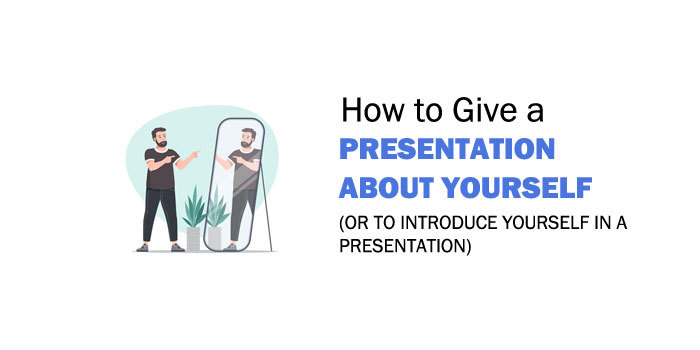
Presentations can be very nerve-racking experiences!
Even seasoned speakers will get the jitters!
When you’re preparing to give a talk about something, you put a lot of time and energy into crafting what you have to say. Understandably, you want things to go as well as possible.
Maybe you’re going to give a speech about an area of expertise that you have in a particular industry.
Perhaps your presentation will to focus on a personal experience that’s had a significant influence on your life.
Then again, you could be getting ready to give a funny speech that you hope will really entertain listeners .
Whatever your presentation is about, your main goal is for those attending your talk to pay attention. Without that, all your blood, sweat and tears − as the saying goes − is for nought!
Giving a Presentation About Yourself
When you introduce yourself at the start of a presentation, it’s the first opportunity that audience members have to meet you formally. So, you should give them the best impression that you can.
It’s critical, at this point, to establish a strong connection with participants that will encourage them to hear you out.
Audiences are known to judge a speaker quite quickly!
The moment you open your mouth, they’re deciding whether they’re going to like what you have to say or if there’s something else they’re rather spend their evening doing.
If it’s the latter, they’ll look for a chance to make a speedy exit as unobtrusively as possible – like when the lights dim so that you can show your first slide, for example.
Here’s how to woo watchers and keep them in their seats with an effective personal introduction.
Start with the Basics
At a minimum, you must tell those listening who you are and what your presentation is about.
If they’ve signed up for the talk, they should know this already. Nevertheless, you need to show them respect by starting off with these few facts.
You never know, someone could be in the wrong meeting room!

In addition, this is the time to pique participants’ interest by briefly saying why it is that you’re giving this particular speech.
Typically, you’ll do this by offering your credentials or a little of your experience on the subject matter.
Here, you can also include a comment about what you hope listeners will learn from you.
You may have heard this approach referred to as the elevator speech or elevator pitch .
In this instance, it’s all about giving people the basic information they need in preparation to hear your speech, and doing it concisely in simple language that everyone will understand.
Here’s a sample:
‘Hello. My name is ___________. I’m a neuroscientist. I’m here to talk about how the body responds to stress and what we can do to improve our stress responses.”
Construct the Connection
Beyond offering the basics, give some thought to how you’d like audience participants to remember you.
This where you must consider how to make the right connection with listeners.
Sure, you want them to think favourably of you but what are the particulars of that good impression?
Can you imagine what they might tell others about your talk?
Do you want them to go away and Google more information about your speech topic ?
Are you interested in having them follow your story on social media?
This will determine what you tell them in addition to your name, rank and serial number, so to speak, and your subject matter expertise.
Here are a few steps that will help:
1. Predict participant profile
For any presentation, you should know who you’re speaking to.
While you can’t be expected to know anything about audience members as individuals, you should be able to get a general sense of them in terms of their demographic and other characteristics.
Say you’re speaking to members of a local club. Find out ahead of time why these folks are members of the same organization.
Are most of them retired and looking for a social outlet? Is the club focused on providing a service to the immediate community, or doing good works oversees?
Try to develop a loose idea in your mind of what the participants have in common.
2. Think like listeners
As much as possible, try to put yourself in the shoes of the people coming to hear your presentation.
Be very careful not to generalize or assume too much based on what you understand connects them as a group.
Just use what you know as a helpful yard stick to gauge what you can say about yourself that might resonate with them – or with the majority.

Maybe you’re giving a talk about how to achieve financial success, and your audience is all 20 somethings struggling to pay off student debt while juggling a few jobs in the gig economy.
Certainly, you should introduce yourself with regard to your financial expertise. However, you’ll make a stronger impact on them if you can relate to being a starving student once yourself.
They need to get that you know what you’re talking in both respects and what you’re going to tell them will be valuable.
3. Use universal understanding
Regardless of the diversity in your audience and how they may differ from you, there are some day-to-day life events that most of us can connect with.
Use this common appreciation to create empathy in your self introduction .
You might be able to bond early on with participants by mentioning interpersonal relationships, traffic jams, work challenges or inclement weather, for instance.
When you can offer something else about yourself in this way, it will enhance the connection between you and your listeners.
Succinctly explaining your back story, or your personal perspective, as it relates to your topic will grow your credibility.
“Hello. My name is ____________. I’m a family therapist. When I was a child, I had a sibling that suffered from mental health problems and that’s why I became a therapist. I’m here today to tell you how we can strengthen and heal relationships with others.”
Putting it All Together
There are a few terms you may hear that sum up putting these pieces together to introduce yourself.
It’s called the Rhetorical Triangle or the Triangle of Trust. Simply put, it’s about connecting yourself to the message and then connecting your message with the audience.
It may be easier to remember if you can visualize a triangle with three points – speaker, message, audience.

This demonstrates the importance of speaking from one’s knowledge base, presenting the message logically and appealing to the audience’s emotion.
It reinforces that people are more likely to listen to and connect with you when you appear to know what you’re talking about and have a passion for the subject matter.
You might also like: Preparation: How to write a Speech Outline (with Examples)
6 Ways to Work your Introduction Magic
Once you’ve got a good idea of what you want to say about yourself in your presentation, it’s time to fine tune your plan. Here are several tips to make your personal intro really pop!
1. Communicate clearly
It shouldn’t surprise to you that you need to speak at a reasonable volume and enunciate your words clearly.
A successful speech starts out strong .
Therefore, when you’re telling listeners who you are and a bit about you this is the place to practice communicating properly.
You may feel reluctant to ‘toot your own horn’ but the audience needs to know a little about you and also how to say your name correctly.
So, speak up !

If your name might be a difficult one for some participants to pronounce, take the time to walk them through. Here are two illustrations:
“Hello. My name is Adeolu Akomah. That’s pronounced “ad – e – o – lu – a – kom – ah”.”
“Hello. My name is Ryan Trench. That’s pronounced the same way as in “trench coat”.”
2. Make it natural
As much as possible, put your nervousness aside and try to be yourself.
In other words, show your personality sincerely and don’t try to present an image of someone that you’re not.
We can be forgiven for watching other presenters and thinking that they’re more compelling speakers or have a special charisma.
This may definitely be the case, but how do you think most of them became this way?
It’s because they learned to be comfortable in their own skin when giving speeches.
We each have a unique personality and one key to connecting with an audience is to show that when introducing yourself.
3. Set the tone
Building on the previous point, set the proper tone for your talk.
Will it be a quite formal presentation about a serious subject?
Or, is it going to be an entertaining personal story where you want participants to feel a little laid-back and not restrain their laughter at the right moments?
Try to match the emotion in your voice to the purpose of your presentation.

There’s nothing wrong with speaking in grave thoughtful tones when you want to pull on people’s heart strings with a serious subject matter like childhood cancer.
By the same token, letting a few chuckles escape when you introduce why you’re an expert on skiing mishaps can also stage an appropriate mood.
Setting the tone also means being polite and showing participants that you appreciate their attendance. Acknowledge them with a short welcome or thank them for coming.
4. Bring best body language
Body language is a critical component of giving any speech.
During your personal introduction, your body language can help to build trust or cast doubt on your words.
Strive to appear relaxed and confident
Listeners will then be more apt to believe that you are who you say you are and that you have something to tell them that’s worthy of their time and attention.
5. Watch for TMI
This is a trickly one!
TMI, or too much information, is generally a judgement call based on the aim of your presentation.
So, how much is too much?
Well, you mustn’t offer your whole life story! Just zero in on the relevant details that are necessary to set the stage for your speech.
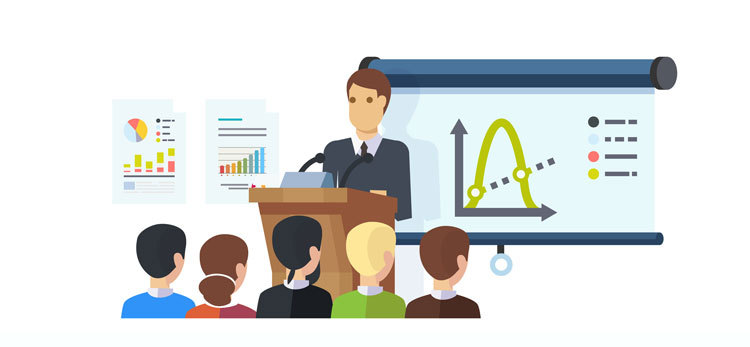
We’re all complex individuals with varied and interesting backgrounds and life situations. Your audience gets that but they want to know what’s drawn you to speak to them today.
As already touched upon, how to describe yourself as an expert is critical.
It’s okay to be humble but remember that you need people to understand that you know your subject matter so give them enough to go on.
6. Strategize with stereotypes
‘No two ways about it, your audience is bound to stereotype you when they hear a bit of your background.
There are two methods to use this to your advantage.
First, you can capitalise on the typical stereotype and reinforce it with some self-deprecating humour. Maybe you want to play up being a science geek.
Alternatively, you can turn the stereotype on it’s head by introducing yourself as an atypical example of what listeners may be assuming when they hear your background.
Say you’re a grandmother who is giving a talk about saving the environment. If you’ve sailed solo across an ocean, weave that into your introduction as it relates to your passion for ecology.
Whatever you choose, think of what works best to connect with your audience.
Try Out Toastmasters
Here’s another approach to learning the fine points about introducing yourself in a presentation – learn from Toastmasters International .
If you’re not familiar with this organization, essentially, they’re a club where people meet regularly to study and practice public speaking and leadership skills.
Plan to drop in at a meeting as a visitor when someone is giving a talk, or watch online videos of members presenting.
These are two ways to observe how people apply what they learn through Toastmasters to give a great introduction about themselves.

The other choice is to read up on the first speaking project that all Toastmasters members take on.
This is called the Icebreaker speech . The objective is for presenters to give a short talk about themselves so that other members can get to know them.
Of course, this is definitely a different type of speech !
Having said that, the Icebreaker lesson reinforces that you can choose what exactly you want people to know about you, and its good practice for getting comfortable talking about yourself.
The guidance given is to say something about your life experience, your occupation, what you spend your time doing and/or your family.
People love personal stories so no matter what you choose to tell them about yourself, they’re bound to find it interesting and probably will notice several points of connection they have with you.
What’s more, even if you’re not a member of Toastmasters International , you can access the Icebreaker speech instructions free online.
If you do decide to delve further into Toastmasters, you never know, you might quickly get hooked!
Related: What to Expect at Your First Toastmasters Meeting
Conclusion: Giving about Presentation About Yourself
How you introduce yourself when giving a presentation can make all the difference.
Be mindful that the start of your talk is when you have a captive audience.
And, make sure you use that edge to intrigue them and then make a smooth transition to the content of your speech.
By following a few pointers about the best way to introduce yourself, you’ll leave listeners with an immensely memorable experience!
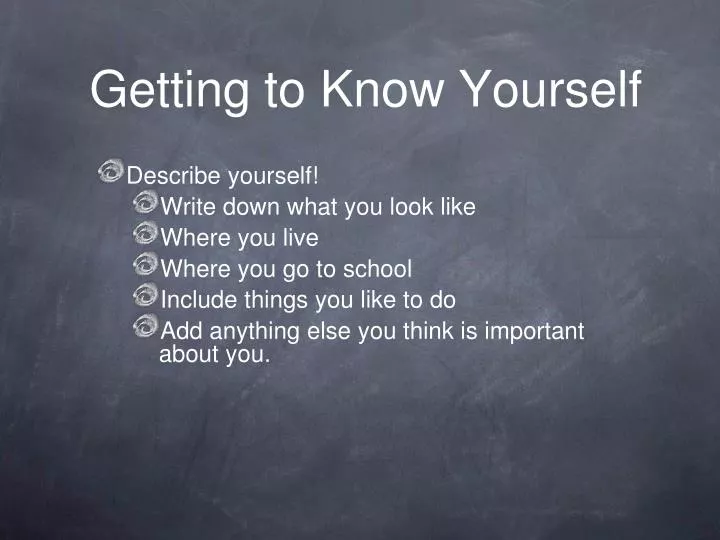
Getting to Know Yourself
Oct 25, 2014
200 likes | 327 Views
Getting to Know Yourself. Describe yourself! Write down what you look like Where you live Where you go to school Include things you like to do Add anything else you think is important about you. Small Group Time!.
Share Presentation
- responsible people
- small group
- responsible people admit
- step 2 list maria

Presentation Transcript
Getting to Know Yourself • Describe yourself! • Write down what you look like • Where you live • Where you go to school • Include things you like to do • Add anything else you think is important about you.
Small Group Time! Each small group has a scenario where a teen must make a difficult decision. What they decide will tell a lot about who they are and what is important to them. • Read through your scenario • Decide how you would handle the situation • Discuss the situation and possible outcomes with your group • Be prepared to share!
Six Important Qualities • Many people think the six following qualities are important. • Having these qualities helps people gain the respect, trust, and admiration of others.
Honesty The ability to be truthful and fair.
Responsibility The ability to be dependable, make wise decisions, and accept the results of your actions and decisions.
Courage The strength to stand up for what you know is right.
Concern and Respect for Others The willingness to care about others and consider their feelings, needs, and opinions.
(Good) Health Mental and physical wellness
(Good) Citizenship Active, helpful membership in the community
Partner Time! Choose one of the six qualities listed and decide how you can tell that someone has this quality.
Deciding What’s Important to You • Family & Friends help us decide what is important in our lives • You need to identify the qualities you admire • Knowing this will help to shape your beliefs and decisions • It will also help you become the kind of person you want to be
Steps to Making Wise Decisions • Identify the decision you need to make • List as many choices for your decision as possible. If you have many choices, you will have a better chance of making a wise decision. • Cross out choices that are harmful or go against your beliefs. • Read each remaining choice. Think about what might happen if you select it. • Select the choice that will probably have the best results for you and others. • Carry out your choice. • Think about the results of your decision. That way, you will know whether to select that choice next time.
Using the Steps to Make Wise Decisions: A Closer Look at Maria Step 1: Identify the decision Maria must make: Step 2: List Maria’s Choices: Step 3: Cross out choices against Maria’s beliefs: Step 4: Think about what might happen for each remaining choice Step 5: Select the best choice. Step 6: Carry out the best choice. Step 7: Think about the possible results of the decision.
Ready for Responsibility? • Responsible people make wise decisions that help themselves and others. • Responsible people do what they promised to do. • Responsible people admit their mistakes, and do what they can to make up for their mistakes. • Responsible people accept the results of their decisions. • Responsible people do not expect others to solve the problems that they have caused.
No Excuses, Please. • Responsible people don’t make excuses to hide their mistakes. • An excuse is an explanation for poor behavior • People who make excuses often blame someone else for their own mistakes. • They are trying to make themselves look good • Responsible people are honest
No matter what excuses people give, they are judged by what they do. Their actions, not their words, show what they think is important.
Taking on Responsibility • Sometimes responsibilities are given to you. • Other times, you might volunteer for responsibilities. • Being responsible means doing your share- and a little more. • When you do that “little more” you will feel good about yourself, and others will notice.
Homework • Ask a trusted adult in your life (Mom, Dad, Aunt, Uncle, Coach, Teacher etc.) to tell you about a time they saw you display one of the six important qualities. Write down what they tell you, and how their words made you feel. Due: Beginning of next class
Exit Ticket Using your half sheet of paper, write down responsibilities assigned at home, school, and work and responsibilities volunteered for at home, school, and work.
- More by User

Getting to Know
Getting to Know Aperture Aperture As the f-stop numbers go up in number the aperture size becomes smaller Traditionally, the f-stop setting is located on the lens barrel Depth of Field
564 views • 15 slides
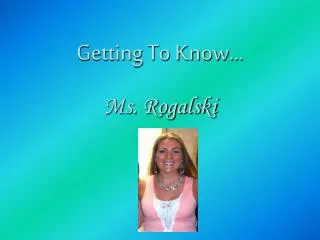
Getting To Know…
Getting To Know… Ms. Rogalski I grew up in Dover, New Jersey My Birthday is March 21 I love going to the beach I’m in a Sorority—Theta Phi Alpha My Favorite Color is Blue All about Me QFA My Family Dad, Mom, Ms. Rogalski, Scooter (my cat), & my Fish Yummy In The Tummy…
361 views • 5 slides

GETTING TO KNOW DNA:
GETTING TO KNOW DNA: . Below is one of the molecules that makes up DNA. What functional groups do you see in the molecule:. Hydroxyl Carboxyl Amino Phosphate. As you know, DNA stands for…. DEOXYRIBONUCLEIC ACID. Is DNA a monomer or polymer. Monomer Polymer.
620 views • 53 slides

Getting To Know Jesus
Getting To Know Jesus. LABC Word Study Fall-Winter 2007 Dr. Ben Jones, Pastor . Overview of The Study. An Argument For this Kind Of Study Developing Understanding Of Christian Doctrine Defining The Doctrine Of Christ Reconstruction Of The Historical Jesus
524 views • 41 slides

Getting to know...
Getting to know... . Anna Leonowens. Researched and prepared by Dennis Elliott. Hello! Some of you may recognize me. My name is Anna Leonowens ... the “I” referred to in the title of the Rodgers and Hammerstein musical The King and I .
129 views • 0 slides

Getting to know... . Rodgers and Hammerstein’s The King and I. Photograph by Joan Marcus . Researched and prepared by Dennis Elliott.
856 views • 62 slides
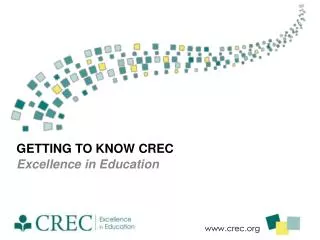
Getting to know CREC
Getting to know CREC. Excellence in Education. CREC’s Mission. “To work with boards of education of the Capitol Region to improve the quality of public education for all learners .”. Mission. To achieve its mission, CREC will:
554 views • 37 slides
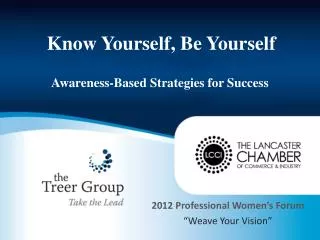
Know Yourself, Be Yourself
Know Yourself, Be Yourself. Awareness-Based Strategies for Success. 2012 Professional Women’s Forum “Weave Your Vision”. Let’s Talk About . . . . Introductions Leadership Th e Genius Study Developable Success Traits Own your future Door Prize Drawing. Are Leaders Born or Developed?.
1.31k views • 32 slides
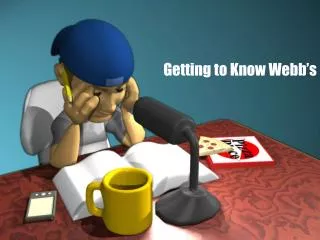
Getting to Know Webb’s
Getting to Know Webb’s. Webb’s Depth of Knowledge. Level One (recall) requires simple recall of such information as fact, definition, term, or simple procedure A student answering at Level 1 either knows the answer or does not. Webb’s Depth of Knowledge.
660 views • 43 slides
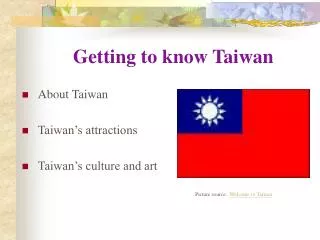
Getting to know Taiwan
Getting to know Taiwan. About Taiwan Taiwan’s attractions Taiwan’s culture and art. Picture source: Welcome to Taiwan. Getting to know Taiwan.
985 views • 12 slides
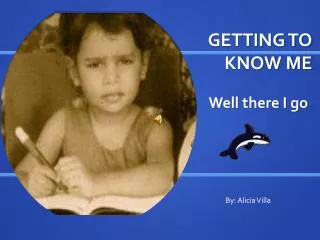
GETTING TO KNOW ME
GETTING TO KNOW ME. Well there I go. By: Alicia Villa. IS NOT PUERTO RICO EVEN THOUGH I LOVE IT!!!!. COLONIAL AND MODERN ARQUITECTURE. WHAT TO EAT?....WELL…. Typical Food Fried Mojarra , coconut rice, fried plantain fresh salad and Melon of pineapple juice.
489 views • 26 slides

Get to know: YOURSELF!!!
Get to know: YOURSELF!!!. E xtrovert.
244 views • 13 slides

Getting to Know You
Getting to Know You. Let’s keep learning about pronouns. Demonstrative Pronouns. Demonstrative pronouns point out specific persons, places, or things. There are two singular and two plural demonstrative pronouns: Singular : this that Plural : these those. Pay Attention!.
415 views • 15 slides

Getting to know... . King Mongkut. Researched and prepared by Dennis Elliott. Hello! Some of you may not recognize me. I am Phra Bat Somdet Phra Poramenthra Maha Mongkut Phra Chom Klao Chao Yu Hua .. or King Rama IV of Siam.
532 views • 28 slides
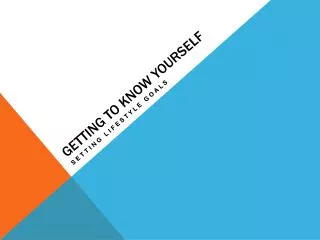
Getting to Know Yourself. Setting Lifestyle Goals. Setting Lifestyle Goals. Objectives How to determine your values, interest aptitudes and abilities The importance of a good-self concept in choosing a career
634 views • 13 slides

Know Yourself
Know Yourself . What is your Starting point?. unique. Rabbi Soloveitchik My generations Rav Dessler. Nature vs. Nurture. That’s just who I am That’s how I was raised Choice My voice Avraham Rosh Chodesh
261 views • 14 slides

Getting To Know Jesus. LABC Word Study Fall 2007 Dr. Ben Jones, Pastor. Overview of The Study. An Argument For this Kind Of Study Developing Understanding Of Christian Doctrine Defining The Doctrine Of Christ Reconstruction Of The Historical Jesus A Look At Extra Biblical Sources
443 views • 29 slides

Getting to Know. “KAREN LARA”. KAREN’S FAMILY. Mom Dad My crazy brother My cousin. MY FAMILY. I LIVED WITH MY DAD, MOM AND MY BROTHER. I LOVED MY FAMILY AND MY WORST FEAR IS LOSING ONE OF THEM. WE ARE A GROUP AND WE ALWAYZ WORK TOGETHER!!!!!!!!
146 views • 5 slides
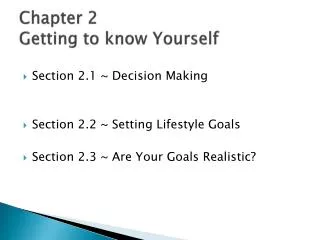
Chapter 2 Getting to know Yourself
Chapter 2 Getting to know Yourself. Section 2.1 ~ Decision Making Section 2.2 ~ Setting Lifestyle Goals Section 2.3 ~ Are Your Goals Realistic?. Chapter 2 Getting to know Yourself. Section 2.1 Decision Making. Objectives:. The Seven Steps of the decision-making process
306 views • 17 slides

Know yourself
The essence of leadership. Emotional and work-life balance. Know yourself. One-on-one leadership. High performance teaming. Influencing the external environment. Leading the work culture. Innovative. Knowledgeable.
99 views • 1 slides

Getting to Know:
Getting to Know:. A Quick Start Guide for Brokers and Loan Officers. Freedom Program. The easiest way to qualify borrowers for loans Upload your existing credit report directly into the freedom program Incredibly accurate approvals in just 20 seconds
272 views • 19 slides

Getting to Know ME
This is about me
2.25k views • 4 slides

Practical ways to ease presentation nerves
One way to offset public-speaking anxiety is to have confidence in your presentation. Brandi Quesenberry shares the keys to making your presentation shine and ensuring that it is memorable, impactful and successful
Brandi Quesenberry

Created in partnership with

You may also like

Popular resources
.css-1txxx8u{overflow:hidden;max-height:81px;text-indent:0px;} A framework to teach library research skills
The trouble with bloom’s taxonomy in an age of ai, emotions and learning: what role do emotions play in how and why students learn, playing the promotion game: how to navigate upshifting, using the snowflake method to build belonging on campus.
A public speaking class changed the course of my life. As a business major, I was required to take public speaking, and that was the only reason I enrolled in the class. I believed talented speakers were born that way and that, by extension, I’d never be good at it. But I was mistaken. I had a supportive instructor. I saw my peers in class grow and improve. I learned that you can learn to be a better speaker. And I decided to major in – and make a career of – communication.
Crafting a good presentation is a skill that combines both art and science. At Virginia Tech, I direct the public speaking resource centre, known as the Comm Lab . Comm Lab provides a host of resources for creating presentations, including peer coaching by undergraduate students.
- Ten smart ways to ace your next academic presentation
- Conference presentations 101: master the art of speaking to an audience
- Do we need to grade students’ presentation skills?
Research shows that employers want college graduates who can communicate effectively. A National Association of Colleges and Employers’ survey earlier this year noted that communication skills – written and verbal – are among the most important soft skills employers are seeking.
So, based on my experience, what makes a successful presentation?
What are the ingredients of a compelling presentation?
First, you need to understand the rhetorical situation of your speaking engagement. This includes the purpose, audience, context and speaker, which all influence your messaging. Let’s break them down:
- Purpose: a strong presentation starts with a clear and compelling purpose. Why are you speaking in front of an audience? Is your intention to inform, persuade or inspire?
- Audience: make your presentation audience-centred. Know the demographics and psychographics of your audience so you can tailor your message. Understand what they already know and what they are hoping to learn or achieve by attending your presentation. Consider their values, attitudes and beliefs surrounding your topic; this allows you to craft your presentation carefully and consider language, examples and experiences that might best resonate with them.
- Context: pay attention to what your listeners might be experiencing. Are you talking to college students in an 8am Monday class? Are you speaking to conference attendees right before the dinner break? Are you presenting to experts in your field? Not understanding the context can make your presentation less impactful or even uninformative.
- Speaker: assess yourself. Why have you been chosen to present? What are the motivations, biases and experiences that you bring to the table?
Then follow the rule of three, which refers to the use of planned repetition in the general speech structure of introduction, body and conclusion. Tell the audience what you’re going to say, say it, then summarise it. Learning theories indicate that we’re more likely to remember the first and last things we’re told. A concept called the primacy effect dictates that you open with an impactful statement and express your purpose for being there, so your listeners’ interests are piqued. The recency effect suggests that when you summarise your main points at the conclusion of your presentation, you should state your call to action.
Leverage the power of storytelling
Storytelling is often overlooked as a key ingredient in effective presentations. And yet sharing authentic human experiences through stories is extremely compelling. Stories help you connect with your audience ; they make your topic relatable, which ultimately increases the power, relevance and retention of your presentation.
Be aware of non-verbal communications
Imagine the incongruence of a speaker announcing how happy he is to be there while speaking with a monotone voice and lack of eye contact, and with his arms crossed at his chest. Pay attention to non-verbal communication: facial expressions, body language, eye contact, vocal inflection. Most experts agree that 70 to 93 per cent of all communication is non-verbal. Effective presenters match their non-verbal delivery to the tone of their content and use that to engage with their audience. Show enthusiasm through gestures and use of calculated movement when you discuss an innovative concept or product, slow down your speech rate to draw attention to changes in patterns, or use vocal tones and facial expressions to express concern or care that reflects a sobering statistic.
Avoid information overload
If you’re speaking on a complex topic, your listeners will need time to process what you’re presenting. Try to avoid covering too much. A tidal wave of information will only overwhelm the audience. Instead, consider narrowing the topic and digging deeper, using a variety of supporting evidence to connect with your listeners. Some consumers want to hear the latest statistics, while others want to know what experts have to say on the topic. Consider using presentational aids to showcase information visually and help with information processing and retention.
Strategic pauses can also help listeners process what you’ve said. If you’re allowing for questions, pauses give audience members a chance to formulate their enquiries. Rushing through a presentation is a missed opportunity for audience reflection and true engagement.
Use visual aids when appropriate
If you’re giving a presentation to a few people around a table, you might not need visual aids – but if you’re standing in front of an audience, consider using slides. We live in a visual society and are accustomed to seeing images and infographics. Visual aids can clarify and simplify complex or abstract concepts, enhance retention of information and get the audience more involved in your presentation.
Think of visual aids not as a substitute for your content, delivery or skills, but rather as a complement that amplifies your presentation. Make sure your visual aids are clear and consistent, integrate them smoothly with your speech and check them for errors.
I also recommend using blank slides or basic animation effects to avoid showcasing visuals that are not yet relevant or have already been covered. As catchy as they are, avoid overusing gifs or memes because they might distract from the purpose of your presentation. Many high-quality images are available free or at minimal cost.
Practise, practise, practise
Practise your presentation out loud. When you articulate your ideas, you might find that you stumble over certain words or your speech is much shorter than you thought. Ideally, record yourself and practise in front of someone who will be honest with you. At Comm Lab, we offer recording services to hone presentations.
These elements contribute to creating strong, compelling presentations. Having confidence in your presentation should serve to reduce at least some of the anxiety associated with public speaking, allowing you to leave a lasting impression on your audience that drives meaningful action.
Brandi A. Quesenberry is the director of undergraduate programmes and a senior instructor in the School of Communication at Virginia Tech. She also runs Virginia Tech’s Comm Lab.
If you would like advice and insight from academics and university staff delivered direct to your inbox each week, sign up for the Campus newsletter .
A framework to teach library research skills
How hard can it be testing ai detection tools, how to develop cognitive presence in your learning community, student communication: a compassionate approach, improve your college course for students with add and adhd, a diy guide to starting your own journal.
Register for free
and unlock a host of features on the THE site
More From Forbes
20 strategies for introverts to improve their presentation skills.
- Share to Facebook
- Share to Twitter
- Share to Linkedin
Working in business development requires a high level of personal interaction, which can be challenging for people who are naturally introverted. Along with one-on-one meetings, business development leaders often make presentations, a medium where it can be more difficult to create connections with audience members.
Below, 20 members of Forbes Business Development Council share their advice on how introverts can improve their presentation skills. By making time to prepare, utilizing visual aids and leaning into their natural strengths, introverts can showcase their knowledge and make a lasting impression on their audience.
1. Practice Your Presentation
Introverted biz dev leaders can enhance presentation skills by practicing in low-pressure settings, focusing on their strengths and preparing thoroughly. They can also utilize storytelling and active listening to engage audiences, build rapport and make meaningful connections, ultimately driving better results for their bottom line. - Dr. Saju Skaria , Digitech Services
2. Focus On Building Connections
“Supercommunicators,” as introduced by Charles Duhigg, prioritize connection over mere extroversion or polished presentation skills. They excel at building rapport, demonstrating genuine care and asking insightful questions. To enhance your presentation skills, focus on your audience’s interests and find meaningful ways to connect. - Quyen Pham , Releady
3. Showcase Your Passion
Introverted leaders can significantly improve their presentation skills by harnessing their emotional qualities. They should focus on the passion behind their ideas and connect emotionally with the audience. Visualizing success and truly believing in their perspective can turn nervous energy into the most amazing presentations, making genuine connections with their teams. - Jacob Collins , Collins Ecom
Amazon Prime Video’s Best New Show Arrives With A Perfect 100% Critic Score
Apple s iphone 16 pro design revealed in new leak, charlotte shooting 4 officers killed while serving warrant, 4. be prepared by planning ahead.
Here are some strategies through which introverted biz dev leaders can improve their presentation skills: 1. Prepare and practice; 2. Focus on strengths; 3. Utilize visual aids; 4. Engage the audience; 5. Practice active listening; 6. Build authentic connections; 7. Seek feedback and continuous improvement and 8. Leverage technology. - Nandhakumar Purushothaman , Mphasis Limited
5. Be Genuine To Connect With Your Audience
I am an introvert, and a piece of advice that stayed with me was to remember that I was an expert on the topic that I was speaking on. Take a deep breath and look at the experience and expertise that you bring to the table. You are of value. If the topic is interesting to you, then it's likely it will be for others. Be yourself; people connect with those who are genuine. - Sheila Halvorson , Harvest Revenue Group LLC
Forbes Business Development Council is an invitation-only community for sales and biz dev executives. Do I qualify?
6. Draw On Your Personal Experiences
If you are a business development professional and consider yourself an introvert, consider yourself lucky. Your strengths have already overshadowed your perceived weakness in your journey to becoming a professional. Harness your inner introvert power and use it for good. Create presentations that include personal experiences that will resonate with the people you are looking to connect with. - Jason Holden , Akkerman
7. Use Technology To Practice
Introverts may not want to practice presentations in front of their peers or managers. Instead, they can use technology to practice speaking and presentations in a self-paced, bite-size manner. Several AI-powered enablement platforms allow leaders to practice talking points, record themselves and receive AI-generated feedback on their tone, word choice, message delivery and more. - Hayden Stafford , Seismic
8. Focus On Your Strengths
For introverts, preparation is key to success. They have to prepare, prepare, prepare and leverage their inner strengths. So, if someone is passionate about what they do but is introverted, they should focus their presentation on the areas that make that passion come alive. By leaning into those strengths, introverts become more confident and can more easily articulate their ideas. - Wayne Elsey , The Funds2Orgs Group
9. Discover Your Communication Style
Introverted business development leaders can improve their presentation skills by tapping into insights provided by "Human Design" and aligning with one's natural energy patterns. For example, "Projectors" excel when they wait for invitations to share their insights, while "Reflectors" benefit from allowing themselves time to process information, which helps them make more meaningful connections. - Bryce Welker , The CPA Exam Guy
10. Find Opportunities To Hear Feedback
By appraising the total skills to deduce the biz dev resource requirements, diverse team members can enhance team presentation skills. Daily standup for the progress check would be helpful for the introverted leaders because the diverse characters from the team members will create ideas and take charge of the roles in each step to help the biz dev leaders improve their pitch. - Gyehyon Andrea Jo , MVLASF
11. Reduce Presentation Pressure With Small Groups
Introverted leaders should focus on one-on-one or small group interactions, where they're likely to feel more comfortable and can make deeper connections. These settings can be more conducive to building the trust and relationships essential for business development success. Utilizing visual aids and technology can also help by diverting some attention away from the speaker. - Saurabh Choudhuri , SAP
12. Lean On Your Listening Skills
Play to your strengths—thoughtful insights, grounding energy, focused approach and good listening skills. As an introverted leader, you can listen for what's being said (and more importantly, what is not being said) in client and business meetings to drive growth for clients. Introverted biz dev leaders then collaborate effectively to solve client pain points. This creates a win-win situation. - Archana Rao , Innova Solutions
13. Apply Storytelling Techniques
Leveraging deep industry insights, introverted biz dev leaders can hone their presentation skills by focusing on clarity, storytelling and data visualization. Personalizing interactions, even in large settings, fosters stronger connections. By mastering these techniques, they can significantly enhance their impact, driving tangible improvements in their organization's bottom line. - Rahul Saluja , Cyient
14. Stay Focused On Your Audience
Excellent presentations require the presenter to focus on the needs of the recipient, not just the needs of the presenter. Be prepared and rehearse your presentation extensively. During the presentation, manage your anxiety by breathing deeply and building rapport with the audience. - Julie Thomas , ValueSelling Associates
15. Ask Questions For Audience Engagement
Active listening is key. Even when you're presenting to a room full of people, communication is two-way, so listening intently to your audience by asking them thoughtful questions is a tremendous way to foster engagement. This also makes the presentation more of a discussion and could help the introverted leader feel more comfortable and at ease. - Ben Elder , Simpplr
16. Solicit Feedback To Find Ways To Improve
Introverted biz dev leaders can boost presentation skills by thoroughly preparing, leveraging strengths like listening, practicing in smaller groups, using visual aids for engaging storytelling and seeking constructive feedback for continuous improvement. These steps enhance connection and impact. - Tina Gada , Vanguard Group
17. Integrate Visual Aids For Impact
In my experience, introverted leaders are deep thinkers and can be dynamic, thought-provoking presenters. What makes them successful is preparing thoroughly, practicing, using visual aids, engaging the audience and seeking networking opportunities. These strategies help build confidence, deliver compelling presentations and foster meaningful connections to their audience. - Scotty Elliott , AmeriLife
18. Have Confidence In Your Expertise
Focus on the fact that this is not a personal situation, and your main goal is to share your know-how or experience with others. Remember what your skill set is and the added value you bring. Your presentation should not be focused on you and your ego, but on the knowledge you bring to the business world. If you realize the value you bring to others, your introverted preoccupations will go away. - Anna Jankowska , RTB House
19. Train Your Presentation 'Muscles'
My first corporate job out of college was a sales role and I was terrified. I took an improv class to help me think on my feet. If improv classes aren't an option, practice, practice, practice. Record yourself giving an important presentation and critique it. Your ability to communicate is your superpower, and you need to train it like you would any other muscle. - Ashleigh Stanford , PracticeTek
20. Explore Different Ways To Engage
You don't have to push yourself to do public talks. You can still share your knowledge and build your reputation comfortably by writing articles, books or sharing reviews and comments online. This way, you can get your ideas out there without feeling uncomfortable, and it won't drop your visibility or impact. It might even help you connect better with others, improving your bottom line. - Dima Raketa , Reputation House

- Editorial Standards
- Reprints & Permissions

IMAGES
VIDEO
COMMENTS
Download it for free now! 8. Creative Business PowerPoint Template. If you prefer a one-page self-introduction, take a look at this template. It contains icons, timelines, statistical graphs, and more resources. Like the previous designs, the download is completely free! 9. Creative Pitchbook PowerPoint Template.
Self Introduction PowerPoint Template by SlideModel. 1. Create a List of "Facts About Me". The easiest way to answer the "tell me about yourself" question is by having an array of facts you can easily fetch from your brain. When it comes to a full-length about me presentation, it's best to have a longer list ready.
One of the hardest things in the universe to understand is the interior of our own minds: we can have spent decades on the earth before we've grasped even ve...
Knowing yourself. Education Technology Health & Medicine. 1 of 21. Download now. Knowing yourself presentation. Knowing yourself presentation - Download as a PDF or view online for free.
Ask a trusted friend or mentor to share what you can improve. Asking for feedback about specific experiences, like a recent project or presentation, will make their suggestions more relevant and easier to implement. 2. Study people who have been successful in your role. Look at how they interact with other people.
Presentation on theme: "Chapter 2 Understanding Yourself"— Presentation transcript: 1 Chapter 2 Understanding Yourself. Section 2.1 Getting to Know Yourself Section 2.2 Being an Individual. 2 Section 2.1 Getting to Know Yourself. 3 Getting to Know Yourself. Section 2.1 Main Idea You need to know yourself to choose the right career.
Try a self-compassionate phrase. Take a walk. Talk to a trusted loved one. Sit with your feelings without judging yourself. Remember that being human means being complex and sometimes having ...
What to Include in a Get to Know Me Presentation? Overview • This is a 4 - 5 page presentation about you • Include what you feel is most important for your team to know • This presentation can be used along with the new leader success process download on my website under free leader resources Personal Background • Where are you from?
A great way to kick off the introduction to your creative self-introduction PPT is to tie yourself to the topic and then tie the topic to the audience. Start by stating your name and job title and then share a random or a fun fact about you. Then, transition into the main part of your presentation about yourself. 4.
3. Create a short segment to engage the audience first. Before you begin talking about yourself in your presentation, you can first engage the audience with a short segment. There are several effective approaches you can try to recognize your audience and draw their attention. Some presenters may introduce a compelling quote or statistic and ...
Download the "About Yourself" presentation for PowerPoint or Google Slides and start impressing your audience with a creative and original design. Slidesgo templates like this one here offer the possibility to convey a concept, idea or topic in a clear, concise and visual way, by using different graphic resources. ... You never know when a ...
Step #2: Tell your audience what problem you can solve for them. This is where all of the pre-work comes into play. In this step, you will use the answers to one of those questions that you answered earlier. For instance, if my topic is how to deliver presentations, I have to determine why the audience would care.
Title: Getting to Know Yourself Author: LCPS Last modified by: Lexi Swinimer Document presentation format: On-screen Show (4:3) Other titles: Gill Sans ヒラギノ角ゴ ProN W3 Arial Chalkboard Calibri MS Pゴシック MS PGothic Wingdings Chalkboard Bold ヒラギノ角ゴ ProN W6 Title & Bullets Default - Title and Content Default - Title Only Default - Title Slide Title - Center Photo ...
There are many techniques you can practice to develop self-awareness. Some common techniques include: Mindfulness Meditation. Grounding techniques, and reconnecting to the Earth. Tai Chi, Qigong, or Yoga. Strength Assessments, such as the Values in Action Strength Test, from the University of Pennsylvania. Journaling.
Greet your audience with a warm welcome, tell them who you are and what you are going to talk about, and tell them why you are going to talk about it. Take a look at Making a Presentation:Part One. The middle section. This is where you tell them about you, tell them about your hobbies, your hopes, your dreams, your goals.
16. Spend quality time with yourself. 17. write for 20 minutes a day about your problems. 18. Find helpers, teachers, counselors, mentors to show you the way. 19. Step four is to read and listen to tapes. 20. Step five is to take risks.
Knowing yourself - Free download as Powerpoint Presentation (.ppt), PDF File (.pdf), Text File (.txt) or view presentation slides online. This document provides information about getting to know yourself in order to choose the right career. It discusses the importance of self-awareness and understanding your values, interests, skills, talents, personality, learning styles, self-image and self ...
Icebreakers for one-on-one presentations. Introduce yourself. Unless you already know each other, introducing yourself is the easiest way to look proactive and get your presentation going. After all, it's in your best interest for your prospect to warm up to you before your pitch or presentation! Have a conversation. Don't go straight to ...
Presentation Transcript. Your Values (Continue) • Six general values • Achievement - want to succeed in whatever you do • Courage - is the ability to overcome difficulties or to conquer fear or despair. . Example: When you speak up for an unpopular cause. • Recognition- want others to appreciate and respect your accomplishments.
Try to develop a loose idea in your mind of what the participants have in common. 2. Think like listeners. As much as possible, try to put yourself in the shoes of the people coming to hear your presentation. Be very careful not to generalize or assume too much based on what you understand connects them as a group.
Color. Skip to start of list. 116 templates. Create a blank About Me Presentation. Blue and Red Modern Photography Portfolio Presentation. Presentation by Canva Creative Studio. Welcome Back Plant Themed School Presentation. Presentation by Linda the Librarian. Orange and Black Simple Modeling Portfolio Presentation.
An Image/Link below is provided (as is) to download presentation Download Policy: ... Chapter 2 Getting to know Yourself. Section 2.1 Decision Making. Objectives:. The Seven Steps of the decision-making process. 306 views • 17 slides. Know yourself. The essence of leadership. Emotional and work-life balance.
Getting to Know Yourself.ppt - Free download as Powerpoint Presentation (.ppt), PDF File (.pdf), Text File (.txt) or view presentation slides online.
Audience: make your presentation audience-centred. Know the demographics and psychographics of your audience so you can tailor your message. Understand what they already know and what they are hoping to learn or achieve by attending your presentation. ... Ideally, record yourself and practise in front of someone who will be honest with you. At ...
5. Be Genuine To Connect With Your Audience. I am an introvert, and a piece of advice that stayed with me was to remember that I was an expert on the topic that I was speaking on.